Artificial Intelligence Control System Applied in Smart Grid Integrated Doubly Fed Induction Generator-Based Wind Turbine: A Review
Abstract
:1. Introduction
2. Power System Stability Challenges Confined to IEC 64100 Standards
2.1. Voltage Fluctuations
2.2. Startup and Switching Operation of Wind Generators Onto The Smart Grid
2.3. Active and Reactive Power
2.4. Frequency Regulation
2.5. Harmonics
3. General Structure and Methodologies of the Review
3.1. Functions of AI for DFIG Power Converter Control Systems
- Classification
- Regression
- Optimization
- Classification has been widely explored in machine language and pacts with transferring input data information through a specific tag signifying any single k-discrete modules [45]. The typical method is to learn a classifier from labeled data. However,, actual data might comprise noise as termed in [131] as consisting of non-systematic errors [132].
- Regression: A historical dataset deals with a fortune of information to the end-user. Furthermore, the accuracy of the forecast methodology is the key [133]. Consequently, an exchange between efficiency and accuracy is necessary for the dataset-operated energy predicting methods [134,135]. Researchers in [136] identified that the long-term and short-term memory (LSTM) and convolutional neural network (CNN) hybrid approach outperforms the discrete method, diminishing the error, though challenging to incorporate. The hybrid approach recognizes the association between inconsistent input parameters and output parameters to forecast the significance of additional uninterrupted objective parameters on assumed input parameters. The researchers in [137] established that among the polynomial, SVM, and Random Forest (RF) algorithms, the RF algorithm models are not suitable for long-term prediction. For instance, in [138], researchers recognized that regression modeling could enable an intelligent controller amongst the variable electrical input parameters and the output control parameters.
- Optimization: This mentions finding the best resolution of maximizing or reducing impartial functions, including an established pair of accessible substitutes that are certain on restraints, impartialities, or inequities to gratify the results [139].
3.2. AI Methodologies in DFIG Power Converter Control System
3.2.1. Fuzzy Logic Spatial Analysis
3.2.2. Metaheuristic Methods
3.2.3. Expert System
3.2.4. Machine Learning Neural Network
- Supervised learning;
- Unsupervised learning;
- Reinforcement learning.
- Supervised learning (SL)—Supervised learning is explained by its use of input and output pair data sets to train algorithms to institute plotting accurately and applicable affiliations between the inputs and outputs. This aspect is specifically suitable for circumstances in power converters, wherein structure patterns are stimulating to articulate. The supervised learning methodology is categorized as an approach-oriented (i.e., ANN technique), probabilistic graphic methodology (Bayesian Networks), and thought-oriented methodology (i.e., conventional and sparse kernel methodology). The various investigations have been fanatic to enlighten the presentation of neural network methods.
- 2.
- Un-supervised machine learning (USL)—The un-supervised machine learning accords the end-user to achieve more compounded processing tasks. These compounded tasks are associated with supervised learning. Even though unsupervised learning can be further randomly associated with an added natural learning methodology, it does not have an output dataset about the learning objective through the learning procedure. The database is available in the input and the output sets. Unsupervised learning algorithms comprise clustering, neural networks, and data firmness. For the dataset gathering, it discovers the symmetries out of the messy database and barriers the database into numerous altered groups rendering to their resemblances. In such a manner, the dataset features inside the similar group are alike and dissimilar from the other groups.
- 3.
- Reinforcement machine learning—The reinforcement learning (RL) approach is not a prerequisite to a training database such as SL and USL. As an alternative, it discusses goal-oriented algorithms, which inquire how to attain a complex goal or make the best use of a specific dimension over several steps. This object-aligned approach articulates from interfaces with the model approach by analysis [240,241]. Thus, it accrues knowledge gradually and acquires a detailed strategy that makes the most of specifically defined objectives. Ideally, RL is a Markov decision procedure [43,242,243]. The RL training aims to advance a Q-table in response to an act choosing criteria, which perhaps eventually make the best use of the total predictable rewards. The Q-table is a useful strategy matrix that registers the detained optimum activity given the specific conditional parameters [244,245,246].
3.2.5. Timeline of Events
- Fuzzy logic and machine learning can be subjugated for classification tasks. The fuzzy logic and the expert systems have become more reasonable, particularly for the expert system [248].
- This fast improvement in computerized applications accelerates applying different AI control methodologies for substituting the fuzzy logic control and expert system [249]. Until 2005, researchers recognized that hands-on applications of FL and ES were presented partially.
- Both metaheuristic methodologies and machine learning can be applied to optimization tasks. Specifically, machine learning-based reinforcement learning optimization focuses on the dynamic optimization involved with the decision-making in MPPT control.
- Neural network methodologies are the utmost proactive zone for AI implementation for electronics’ converter systems due to the following reasons:
- Data structure exploration.
4. Smart Grid-Integrated DFIG Power Converter Control System
- The controller arrangement in [189] involves comprehensive data of control system ideologies, which are exciting and impractical for compound circumstances. It is tedious for the compound system to review the time-variation and vector field-direct features, where the controller has generally improved numerous acute operational facts [189].
- The research scholars in [158] discussed that the proposed modeled controller functions statically with restricted compliance specifically for time-invariant schemes. However, when operative and conservational circumstances alter, the controller turns out to be a little sturdy to structure variable drifts with a worse possible control performance.
- From an effective control outlook, a perfect controller must be capable of dealing with variable acceptances with a speedy momentary reaction to sustain system steadiness. AI approaches alleviate these boundaries. Various usage of the regression-associated task in the control system is well prepared in terms of fuzzy control [217,255,256,257] neural network [157,258,259] and reinforcement learning [240,244,260,261] individually.
4.1. Fuzzy Logic-Centered Control Methodology
4.2. Neural Network-Based Control Methodology
- Conventional neural network-based controller;
- Neural-network controller with fuzzy logic base;
- Neural-network controller with adaptive neuro-fuzzy interface control system;
- Neural network with the recurrent controller.
4.2.1. Conventional Neural Network-Based Controller
4.2.2. Neural-Network Controller Based on Fuzzy Logic
4.2.3. Neural-Network Controller with Random Neuro-Fuzzy Interface Control
4.2.4. Neural Network System with the Recurrent Controller
4.3. Reinforcement Learning-Based Control Methodology
4.4. Summary of AI Algorithms in Power Converter Controllers
4.5. AI Outlook on DFIG Power Converter Control System
4.5.1. Rationalization of AI Methodologies Applied to DFIG Power Converter Control System
4.5.2. Association of Vital Information
4.5.3. Fast Tracking AI at Lightning Speed
4.5.4. Privacy of the Accrued Database
4.5.5. Power Electronic Database
5. Conclusions
6. Future Scope
Author Contributions
Funding
Institutional Review Board Statement
Data Availability Statement
Acknowledgments
Conflicts of Interest
Abbreviations
| AC | Africa Case |
| ACO | Ant Colony Optimization Algorithm |
| AE | Auto Encoder |
| AI | Artificial Intelligence |
| ANFIS | Adaptive Neuro-Fuzzy Inference System |
| ANN | Artificial Neural Network |
| CNN | Convolution Neural Network |
| CSI | Current Source Inverter |
| DFIG | Doubly Fed Induction Generator |
| DL | Deep Learning |
| ENN | Elman Neural Network |
| ESN | Eco State Neural Network |
| ESR | Equivalent Series Resistance |
| FFNN | Feed-Forward Neural Network |
| FMEA | Fault Mode and Effective Analysis |
| FNN | Fuzzy Neural Network |
| FSMPC | Finite State Model Predictive Control |
| GA | Genetic Algorithm |
| GL | Germanischer-Lloyd |
| IEC | International Electro-Technical Commission |
| IEDs | Intelligent Electrical Devices |
| IRENA | International Renewable Energy Agency |
| KLNN | Kohonen Learning Neural Network |
| LSTM | Long Short Term Memory |
| ML | Machine Learning |
| MLPFF | Multi-Layer Perceptron Feed-Forward |
| NARX | Non-Linear Auto Regressive Network |
| NZE | Non-Zero Emission |
| PCA | Principal Component Analysis |
| PEC | Power Electronic Circuit |
| PFF | Probabilistic Feed-Forward |
| PHM | Prognostic Health Management |
| PSO | Particle Swarm Optimization |
| PWM | Pulse-Width Modulation |
| REs | Renewable Energies |
| RFNN | Recurrent Fuzzy Logic NNN Control |
| RL | Reinforcement Learning |
| RNN | Recurrent Neural Network |
| RT2FNN | Recurrent Type-2 Fuzzy Neural Network |
| RVM | Relevance Vector Machine |
| SE | Sum-Squared-Error |
| SL | Supervised Learning |
| SOA | System Operational Availability |
| SPQ | Small Power Quality |
| SPS’s | Stated Policy Scenario |
| STEPs | Social, Technological, and Environmental Pathways |
| SVPWM | Space Vector PWM |
| SVM | Support Vector Machine |
| TD | Temporal Difference |
| TDNN | Time-Delayed Neural Network |
| TFs | Transfer Functions |
| USL | Un Supervised Learning |
| WP | Wind Power |
References
- India Energy Outlook. In India Energy Outlook 2021—Analysis; IEA: Paris, France, 2021.
- International Renewable Energy Agency. Renewable Energy Statistics 2021; International Renewable Energy Agency: Abu Dhabi, United Arab Emirates, 2021.
- De Klerk, M.L.; Saha, A.K. A review of the methods used to model traffic flow in a substation communication network. IEEE Access 2020, 8, 204545–204562. [Google Scholar] [CrossRef]
- Mazouz, F.; Belkacem, S.; Harbouche, Y.; Abdessemed, R.; Ouchen, S. Active and reactive power control of a DFIG for variable speed wind energy conversion. In Proceedings of the 2017 6th International Conference on Systems and Control ICSC 2017, Batna, Algeria, 7–9 May 2017; pp. 27–32. [Google Scholar]
- Elkington, K.; Ghandhari, M.; Söder, L. Using power system stabilisers in doubly fed induction generators. In Proceedings of the 2008 Australasian Universities Power Engineering Conference AUPEC, Sydney, NSW, Australia, 14–17 December 2008; pp. 1–6. [Google Scholar]
- Tian, X.; Wang, W.; Li, X.; Chi, Y.; Li, Y.; Tang, H. Fault ride through strategy of DFIG using rotor voltage direct compensation control under voltage phase angle jump. CSEE J. Power Energy Syst. 2019, 5, 515–523. [Google Scholar] [CrossRef]
- Wei, C.; Han, M.; Lin, S.; Li, X. Low voltage ride-through control strategy of a large capacity DFIG with grid-side thyristor controlled voltage regulator. In Proceedings of the IET Conference on Renewable Power Generation, Edinburgh, Scotland, 6–8 September 2011; Volume 2011. [Google Scholar]
- Solanke, J.S.; Naik, A.V.; Deshmukh, B.T. Coordination control of DFIG under distorted grid voltage conditions using matlab-simulink. In Proceedings of the 2nd International Conference on Computing Communication Control and automation ICCUBEA, Pune, India, 12–13 August 2016. [Google Scholar]
- Co-ordinated Control Strategy for Grid Connected DFIG Wind System under Voltage Imbalance. IEEExplore. Available online: https://ieeexplore.ieee.org/document/8392054 (accessed on 17 May 2022).
- Tiwari, R.; Babu, N.R.; Padmanaban, S.; Martirano, L.; Siano, P. Coordinated DTC and VOC control for PMSG based grid connected wind energy conversion system. In Proceedings of the 2017 17th IEEE International Conference on Environment and Electrical Engineering and 2017 1st IEEE Industrial and Commercial Power Systems Europe (EEEIC/I&CPS Europe), Milan, Italy, 6–9 June 2017. [Google Scholar]
- Chang-Chien, L.R.; Lin, W.T.; Yin, Y.C. Enhancing frequency response control by DFIGs in the high wind penetrated power systems. IEEE Trans. Power Syst. 2011, 26, 710–718. [Google Scholar] [CrossRef]
- De Almeida, R.G.; Castronuovo, E.D.; Peças Lopes, J.A. Optimum generation control in wind parks when carrying out system operator requests. IEEE Trans. Power Syst. 2006, 21, 718–725. [Google Scholar] [CrossRef]
- Mahrouch, A.; Ouassaid, M. De-loaded Low-Voltage Ride-Through control and Primary Frequency Control for AC-Microgrid based PMSG Enhanced by Battery. In Proceedings of the 2021 4th International Symposium on Advanced Electrical and Communication Technologies (ISAECT), Alkhobar, Saudi Arabia, 6–8 December 2021. [Google Scholar]
- Jiao, J.; Yu, Y.; Zou, J. Coordinated Frequency Control of Doubly-fed Induction Generator Based on Interconnected Grid. In Proceedings of the 2020 4th International Conference on Power and Energy Engineering (ICPEE), Xiamen, China, 19–21 November 2020; pp. 124–129. [Google Scholar]
- Morren, J.; de Haan, S.W.H.; Kling, W.L.; Ferreira, J.A. Wind turbines emulating inertia and supporting primary frequency control. IEEE Trans. Power Syst. 2006, 21, 433–434. [Google Scholar] [CrossRef]
- Ullah, N.R.; Thiringer, T.; Karlsson, D. Temporary primary frequency control support by variable speed wind turbines—Potential and applications. IEEE Trans. Power Syst. 2008, 23, 601–612. [Google Scholar] [CrossRef]
- Wang, H.; Chen, Z.; Jiang, Q. Control method for variable speed wind turbines to support temporary primary frequency control. In Proceedings of the IEEE PES T&D Conference and Exposition, Chicago, IL, USA, 14–17 April 2014; pp. 1–5. [Google Scholar]
- Yulong, W.; Guiping, S. Analysis on control method VSCF wind power system. In Proceedings of the 2008 International Conference on MultiMedia and Information Technology MMIT, Three Gorges, China, 30–31 December 2008; pp. 677–680. [Google Scholar]
- Xing, P.; Shi, Q.; Wang, G.; Fu, L.; Wang, Y. Influence analysis of wind power generation on the characteristic of power system frequency. In Proceedings of the 2016 IEEE 8th International Power Electronics and Motion Control Conference IPEMC-ECCE Asia, Hefei, China, 22–26 May 2016; pp. 1444–1447. [Google Scholar]
- Kairous, D.; Wamkeue, R.; Belmadani, B. Advanced control of variable speed wind energy conversion system with DFIG. In Proceedings of the 2010 9th International Conference on Environment and Electrical Engineering EEEIC, Prague, Czech Republic, 16–19 May 2010; pp. 41–44. [Google Scholar]
- Wang, T.; Ding, L.; Yin, S.; Jiang, J.; Cheng, F.; Si, J. A New Control Strategy of DFIG based wind farms for power system frequency regulation. In Proceedings of the 2015 IEEE PES Asia-Pacific Power and Energy Engineering Conference (APPEEC), Brisbane, QLD, Australia, 15–18 November 2015; Volume 3. [Google Scholar]
- Mestri, M.N.; Kumar, B.S. Design of 9-Switch Converter for DFIG System for Active and Reactive Power Control by PID and Fuzzy Logic Controller. In Proceedings of the 3rd International Conference on Electronics, Communication and Aerospace Technology ICECA, Coimbatore, India, 12–14 June 2019; pp. 763–767. [Google Scholar]
- Aspalli, M.S.; Patil, S.J. Study of AI and PI controller using SVPWM technique for induction motor speed control. In Proceedings of the International Conference on Electrical Electronics, Communication, Computer, and Optimization Techniques ICEECCOT, Mysuru, India, 15–16 December 2017; pp. 676–681. [Google Scholar]
- Kadri, A.; Marzougui, H.; Bacha, F. MPPT control methods in wind energy conversion system using DFIG. In Proceedings of the 4th International Conference on Control Engineering & Information Technology CEIT, Hammamet, Tunisia, 16–18 December 2016; pp. 16–18. [Google Scholar]
- Cai, S.; Wen, H. Modeling and MPPT Control of DFIG Wind Energy System. In Proceedings of the International Conference on Renewable Power Generation (RPG 2015), Beijing, China, 17–18 October 2015. [Google Scholar]
- Elmansouri, A.; El Mhamdi, J.; Boualouch, A.; Aamoud, A. MPPT & Control of DFIG in WECS using Back-Stepping Controller. In Proceedings of the 2015 3rd International Renewable and Sustainable Energy Conference (IRSEC), Marrakech, Morocco, 10–13 December 2015; Volume 3. [Google Scholar]
- Saihi, L.; Koussa, K.; Ferroudji, F.; Bakou, Y.; Berbaoui, B.; Roummani, K. SM-MPPT Controller of DFIG Based on Variable Speed Wind Energy Conversion System. In Proceedings of the SIENR 2021—6th International Symposium on New and Renewable Energy, Ghadaia, Algeria, 13–14 October 2021; pp. 3–7. [Google Scholar]
- Akpolat, A.N.; Dursun, E.; Kuzucuoğlu, A.E. AI-Aided Control of a Power Converter in Wind Energy Conversion System. In Proceedings of the 2020 Innovations in Intelligent Systems and Applications Conference ASYU, Istanbul, Turkey, 15–17 October 2020; Volume 20, pp. 1–6. [Google Scholar]
- Sahri, Y.; Tamalouzt, S.; Hamoudi, F.; Belaid, S.L.; Bajaj, M.; Alharthi, M.M.; Alzaidi, M.S.; Ghoneim, S.S. New intelligent direct power control of DFIG-based wind conversion system by using machine learning under variations of all operating and compensation modes. Energy Rep. 2021, 7, 6394–6412. [Google Scholar] [CrossRef]
- Sahri, Y.; Tamalouzt, S.; Lalouni Belaid, S.; Bacha, S.; Ullah, N.; Ahamdi, A.A.A.; Alzaed, A.N. Advanced fuzzy 12 dtc control of doubly fed induction generator for optimal power extraction in wind turbine system under random wind conditions. Sustainability 2021, 13, 11593. [Google Scholar] [CrossRef]
- Tavoosi, J.; Mohammadzadeh, A.; Pahlevanzadeh, B.; Kasmani, M.B.; Band, S.S.; Safdar, R.; Mosavi, A.H. A machine learning approach for active/reactive power control of grid-connected doubly-fed induction generators. Ain Shams Eng. J. 2022, 13, 101564. [Google Scholar] [CrossRef]
- Giannakis, G.B.; Zhang, L.; Wang, G. Real-Time Power System State Estimation via Deep Learning Unrolled Neural Networks. IEEE Trans. Signal Processing 2019, 67, 2–6. [Google Scholar]
- Marugán, A.P.; Márquez, F.P.G.; Perez, J.M.P.; Ruiz-Hernández, D. A survey of artificial neural network in wind energy systems. Appl. Energy 2018, 228, 1822–1836. [Google Scholar] [CrossRef] [Green Version]
- Fan, F.L.; Xiong, J.; Li, M.; Wang, G. On Interpretability of Artificial Neural Networks: A Survey. IEEE Trans. Radiat. Plasma Med. Sci. 2021, 5, 741–760. [Google Scholar] [CrossRef] [PubMed]
- Goodman, B. EU regulations on Algorithmic Decision-Making. Available online: https://arxiv.org/pdf/1606.08813.pdf (accessed on 25 June 2022).
- Wu, W.; Peng, M. A Data Mining Approach Combining K-Means Clustering with Bagging Neural Network for Short-Term Wind Power Forecasting. IEEE Internet Things J. 2017, 4, 979–986. [Google Scholar] [CrossRef]
- Menghal, P.M.; Jaya Laxmi, A. Neural network based dynamic performance of induction motor drives. Adv. Intell. Syst. Comput. 2014, 259, 539–551. [Google Scholar]
- Omitaomu, O.A.; Niu, H. Artificial intelligence techniques in smart grid: A survey. Smart Cities 2021, 4, 548–568. [Google Scholar] [CrossRef]
- Darab, C.; Tarnovan, R.; Turcu, A.; Martineac, C. Artificial Intelligence Techniques for Fault Location and Detection in Distributed Generation Power Systems. In Proceedings of the 2019 8th International Conference on Modern Power Systems MPS, Cluj, Romania, 21–23 May 2019; Volume 9, pp. 1–4. [Google Scholar]
- Deng, Y.C.; Tang, X.H.; Zhou, Z.Y.; Yang, Y.; Niu, F. Application of machine learning algorithms in wind power: A review. Energy Sources Part A 2021, 1–22. [Google Scholar] [CrossRef]
- Paiva, E.B.; Nguyen, H.N.; Lepreux, O.; Bresch-Pietri, D. A Gaussian Process Based Approach to Estimate Wind Speed Using SCADA Measurements from a Wind Turbine. IFAC-PapersOnLine 2021, 54, 65–71. [Google Scholar] [CrossRef]
- Chhipa, A.A.; Kumar, V.; Joshi, R.R.; Chakrabarti, P.; Jasinski, M.; Burgio, A.; Leonowicz, Z.; Jasinska, E.; Soni, R.; Chakrabarti, T. Adaptive neuro-fuzzy inference system-based maximum power tracking controller for variable speed wecs. Energies 2021, 14, 6275. [Google Scholar] [CrossRef]
- Kosuru, R.; Chen, P.; Liu, S. A reinforcement learning based power system stabilizer for a grid connected wind energy conversion system. In Proceedings of the 2020 IEEE Electric Power and Energy Conference EPEC, Edmonton, AB, Canada, 9–10 November 2020; Volume 3, pp. 3–7. [Google Scholar]
- Khandelwal, A.; Kumar, J. Applications of AI for Power Electronics and Drives Systems: A Review. In Proceedings of the 2019 Innovations in Power and Advanced Computing Technologies i-PACT, Vellore, India, 22–23 March 2019. [Google Scholar]
- Zhao, S.; Blaabjerg, F.; Wang, H. An overview of artificial intelligence applications for power electronics. IEEE Trans. Power Electron. 2021, 36, 4633–4658. [Google Scholar] [CrossRef]
- Ullah, N.; Sami, I.; Chowdhury, M.S.; Techato, K.; Alkhammash, H.I. Artificial Intelligence Integrated Fractional Order Control of Doubly Fed Induction Generator-Based Wind Energy System. IEEE Access 2021, 9, 5734–5748. [Google Scholar] [CrossRef]
- Arshid Mehraj, O.S.; Singh, H. Design and Analysis of Artificial Intelligence Based Approach for Control of Wind Turbine. Int. J. Trend Sci. Res. Dev. 2020, 5, 2456–6470. [Google Scholar]
- American Clean Power Association. Wind Energy Generation Systems Part1: Design Requirements—Modified Adoption of IEC Standards 61400-1-202x; American Clean Power Association: Washington, DC, USA, 2021. [Google Scholar]
- IEC 61400-1; International Standard. IEC: Geneva, Switzerland, 2005; Volume 8, p. 92.
- Bhavadharini, N.; Pavithra, B.R.; Lavanya, M.C.; Dhanesh, L. Electrical Simulation Model of IEC 61400-27-1 Doubly-Fed Induction Generator (Type 3A) Based Wind Turbine. Int. Res. J. Eng. Technol. 2019, 6, 3318–3322. [Google Scholar]
- Monti, A.; Ponci, F.; Benigni, A.; Liu, J. Distributed intelligence for smart grid control. In Proceedings of the 2010 10th International School on Nonsinusoidal Currents and Compensation ISNCC, Lagow, Poland, 15–18 June 2010; pp. 46–58. [Google Scholar]
- Cao, D.; Hu, W.; Zhao, J.; Zhang, G.; Zhang, B.; Liu, Z.; Chen, Z.; Blaabjerg, F. Reinforcement Learning and Its Applications in Modern Power and Energy Systems: A Review. J. Mod. Power Syst. Clean Energy 2020, 8, 1029–1042. [Google Scholar] [CrossRef]
- Sun, H.; Guo, Q.; Qi, J.; Ajjarapu, V.; Bravo, R.; Chow, J.; Li, Z.; Moghe, R.; Nasr-Azadani, E.; Tamrakar, U.; et al. Review of Challenges and Research Opportunities for Voltage Control in Smart Grids. IEEE Trans. Power Syst. 2019, 34, 2790–2801. [Google Scholar] [CrossRef] [Green Version]
- Aurangzeb, M.; Ai, X.; Hanan, M.; Jan, M.U.; Rehman, H.U.; Iqbal, S. Single Algorithm Mpso Depend Solar and Wind Mppt Control and Integrated with Fuzzy Controller for Grid Integration. In Proceedings of the 2019 3rd IEEE Conference on Energy Internet and Energy System Integration EI2, Changsha, China, 8–10 November 2019; pp. 583–588. [Google Scholar]
- Lin, T.; Liu, H.; Zhao, S.; Zhao, C.; Ma, T. Short-term wind speed prediction based on SSA-PSO-ANFIS. Taiyangneng Xuebao/Acta Energiae Solaris Sin. 2021, 42, 128–134. [Google Scholar]
- Kim, C.; Kim, W. Coordinated Fuzzy-Based Low-Voltage Ride-Through Control for PMSG Wind Turbines and Energy Storage Systems. IEEE Access 2020, 8, 105874–105885. [Google Scholar] [CrossRef]
- Sarkar, M.; Hansen, A.D.; Sørensen, P.E. Probabilistic Voltage Stability Assessment Considering Variability of Wind Power. 2022. Available online: https://www.researchgate.net/publication/338379176_Probabilistic_Voltage_Stability_Assessment_Considering_Variability_of_Wind_Power (accessed on 25 June 2022).
- Xu, H.; Zhang, Y.; Li, Z.; Zhao, R.; Hu, J. Reactive current constraints and coordinated control of dfig’s rsc and gsc during asymmetric grid condition. IEEE Access 2020, 8, 184339–184349. [Google Scholar] [CrossRef]
- Emanuel, H.; Schellschmidt, M.; Wachtel, S.; Adloff, S. Power quality measurements of wind energy converters with full-scale converter according to IEC 61400-21. In Proceedings of the 2009 10th International Conference on Electrical Power Quality and Utilisation EPQU’09, Lodz, Poland, 15–17 September 2009; Volume 10, pp. 1–6. [Google Scholar]
- Chi, Y.; Liu, Y.; Wang, W.; Dai, H. Voltage stability analysis of wind farm integration into transmission network. In Proceedings of the 2006 International Conference on Power System Technology POWERCON, Chongqing, China, 22–26 October 2006; pp. 1–7. [Google Scholar]
- Lei, Y.; Mullane, A.; Lightbody, G.; Yacamini, R. Modeling of the wind turbine with a doubly fed induction generator for grid integration studies. IEEE Trans. Energy Convers. 2006, 21, 257–264. [Google Scholar] [CrossRef]
- Pena, R.; Clare, J.C.; Asher, G.M. Doubly fed induction generator using back-to-back PWM converters and its application to variable speed wind-energy generation. IEE Proc. -Electr. Power Appl. 1996, 143, 231–241. [Google Scholar] [CrossRef]
- Pöller, M.A. Doubly-fed induction machine models for stability assessment of wind farms. In Proceedings of the 2003 IEEE Bologna Power Tech Conference Proceedings, Bologna, Italy, 23–26 June 2003; Volume 3, pp. 653–658. [Google Scholar]
- Xin, C.; Minxiao, H.; Chao, Z. Power control analysis for variable speed pumped storage with full-size converter. In Proceedings of the IECON 2015—41st Annual Conference of the IEEE Industrial Electronics Society, Yokohama, Japan, 9–12 November 2015; pp. 1327–1332. [Google Scholar]
- Song, X.; Teshager, B.G.; Han, M.; Meng, Z.; Xu, J.; Wang, X. Stability and control of a grid integrated DFIM based variable speed pumped storage system. In Proceedings of the 2017 China International Electrical and Energy Conference (CIEEC), Beijing, China, 25–27 October 2017; pp. 163–168. [Google Scholar]
- Pronin, M.V.; Shonin, O.B.; Vorontsov, A.G.; Gogolev, G.A. Features of a drive system for pump-storage plant applications based on the use of double-fed induction machine with a multistage-multilevel frequency converter. In Proceedings of the 15th International Power Electronics and Motion Control Conference EPE-PEMC, Novi Sad, Serbia, 4–6 September 2012; pp. 1–8. [Google Scholar]
- Li, W.; Joós, G.; Abbey, C. Wind power impact on system frequency deviation and an ESS based power filtering algorithm solution. In Proceedings of the 2006 IEEE PES Power Systems Conference and Exposition PSCE, Atlanta, GA, USA, 29 October–1 November 2006; Volume 2, pp. 2077–2084. [Google Scholar]
- Qiao, W.; Liang, J.; Venayagamoorthy, G.K.; Harley, R. Computational intelligence for control of wind turbine generators. In Proceedings of the 2011 IEEE Power and Energy Society General Meeting, Detroit, MI, USA, 24–29 July 2011; pp. 1–6. [Google Scholar]
- Zhou, D.; Blaabjerg, F.; Lau, M.; Tønnes, M. Optimized reactive power flow of DFIG power converters for better reliability performance considering grid codes. IEEE Trans. Ind. Electron. 2015, 62, 1552–1562. [Google Scholar] [CrossRef]
- Ntsadu, N. Impact Assessment of Large-Scale Penetration of Permanent Magnet Synchronous Generators on Power Quality. Master’s Thesis, University of Cape Town, Cape Town, South Africa, 2017. [Google Scholar]
- Goksu, O.; Altin, M.; Fortmann, J.; Sorensen, P.E. Field Validation of IEC 61400-27-1 Wind Generation Type 3 Model with Plant Power Factor Controller. IEEE Trans. Energy Convers. 2016, 31, 1170–1178. [Google Scholar] [CrossRef]
- Liu, Y.J.; Chen, P.A.; Su, H.J. Power Control Characteristic of Generic Type-3 Wind Turbine Model Based on IEC 61400-27-1 Standard. In Proceedings of the 2019 International Conference on Engineering, Science, and Industrial Applications ICESI, Tokyo, Japan, 22–24 August 2019. [Google Scholar]
- Qiao, W.; Member, S.; Harley, R.G. Effect of Grid-Connected DFIG Wind Turbines on Power System Transient Stability. In Proceedings of the 2008 IEEE Power and Energy Society General Meeting-Conversion and Delivery of Electrical Energy in the 21st Century, Pittsburgh, PA, USA, 20–24 July 2008; IEEE: Piscataway, NJ, USA, 2008; pp. 1–7. [Google Scholar]
- Mohod, S.W.; Aware, M.V. Power Quality and Grid Code Issues in Wind Energy Conversion System. In An Update on Power Quality; BoD–Books on Demand: Norderstedt, Germany, 2013. [Google Scholar]
- Qazi, S.H.; Wazir, M.; Mustafa, B. Technical issues on integration of wind farms with power grid—A review. Int. J. Renew. Sustain. Energy 2014, 3, 87–91. [Google Scholar]
- Orchi, T.F.; Hossain, M.J.; Pota, H.R.; Rahman, M.S. Voltage stability and power quality issues of wind farm with series compensation. In Proceedings of the 2013 IEEE Electrical Power & Energy Conference EPEC, Halifax, NS, Canada, 21–23 August 2013. [Google Scholar]
- Macken, K.J.P.; Bollen, M.H.J.; Member, S.; Belmans, R.J.M. Mitigation of voltage dips through distributed generation systems. IEEE Trans. Ind. Appl. 2004, 40, 1686–1693. [Google Scholar] [CrossRef]
- Guo, Q.; Sun, H.; Wang, B.; Zhang, B.; Wu, W.; Tang, L. Hierarchical automatic voltage control for integration of large-scale wind power: Design and implementation. Electr. Power Syst. Res. 2014, 120, 234–241. [Google Scholar] [CrossRef]
- Zhan, Y.Q.; Choi, S.S.; Vilathgamuwa, D.M. A voltage-sag compensation scheme based on the concept of power quality control center. IEEE Trans. Power Deliv. 2006, 21, 296–304. [Google Scholar] [CrossRef]
- Baggu, M.M.; Chowdhury, B.H.; Kimball, J.W. Comparison of advanced control techniques for grid side converter of doubly-fed induction generator back-to-back converters to improve power quality performance during unbalanced voltage dips. IEEE J. Emerg. Sel. Top. Power Electron. 2015, 3, 516–524. [Google Scholar] [CrossRef]
- Colak, I.; Bayindir, R.; Al-Nussari, M.; Hossain, E. Voltage and frequency stability analysis of AC microgrid. In Proceedings of the 2015 IEEE International Telecommunications Energy Conference, Osaka, Japan, 18–22 October 2015. [Google Scholar]
- Mohod, S.W.; Aware, M.V. A STATCOM-Control Scheme for Grid Connected Wind Energy System for Power Quality Improvement. IEEE Syst. J. 2010, 4, 346–352. [Google Scholar] [CrossRef]
- Sunil, T.P.; Loganathan, N. Power quality improvement of a grid-connected wind energy conversion system with harmonics reduction using FACTS device. In Proceedings of the IEEE-International Conference On Advances in Engineering, Science And Management ICAESM, Nagapattinam, India, 30–31 March 2012; pp. 415–420. [Google Scholar]
- Yuvaraj, V.; Raj, E.P.; Mowlidharan, A.; Thirugnanamoorthy, L. Power quality improvement for grid connected wind energy system using Facts device. In Proceedings of the Joint INDS’11 & ISTET’11, Klagenfurt am Wörthersee, Austria, 25–27 July 2011; pp. 301–307. [Google Scholar]
- Guerra, W.; Kagan, N. Fault locations in transmission systems by evolutionary algorithms. Renew. Energy Power Qual. J. 2009, 1, 303–308. [Google Scholar] [CrossRef]
- Han, Y.; Feng, Y.; Yang, P.; Xu, L.; Xu, Y.; Blaabjerg, F. Cause, Classification of Voltage Sag, and Voltage Sag Emulators and Applications: A Comprehensive Overview. IEEE Access 2020, 8, 1922–1934. [Google Scholar] [CrossRef]
- Gabe, I.J.; Gründling, H.A.; Pinheiro, H. Design of a voltage sag generator based on impedance switching. In Proceedings of the IECON Annual Conference of the IEEE Industrial Electronics Society, Melbourne, VIC, Australia, 7–10 November 2011; pp. 3140–3145. [Google Scholar]
- Tang, Y.; Xu, Y.; Hong, W. Voltage sag monitors optimal allocation using on fuzzy control model. In Proceedings of the POWERCON 2014—2014 International Conference on Power System Technology, Chengdu, China, 20–22 October 2014; pp. 2179–2185. [Google Scholar]
- Espinosa-Juarez, E.; Lucio, J.; Hernández, A. Impact of monitoring program in the voltage sag state estimation in power systems. In Proceedings of the NAPS 2011—43rd North American Power Symposium, Boston, MA, USA, 4–6 August 2011; Volume 17459. [Google Scholar]
- Mohod, S.W.; Aware, M.V. Grid power quality with variable speed wind energy conversion. In Proceedings of the 2006 International Conference on Power Electronic, Drives and Energy Systems PEDES ’06, New Delhi, India, 12–15 December 2006; pp. 1–5. [Google Scholar]
- Cheng, P.T.; Chen, C.A.; Lee, T.L.; Kuo, S.Y. A cooperative imbalance compensation method for distributed-generation interface converters. IEEE Trans. Ind. Appl. 2009, 45, 805–815. [Google Scholar] [CrossRef]
- Chen, X.; Liu, H.; Su, J.; Qin, R. The control strategy of energy storage system for primary frequency regulation and wind power ramp control. In Proceedings of the 2020 5th Asia Conference on Power and Electrical Engineering ACPEE, Chengdu, China, 4–7 June 2020; pp. 652–656. [Google Scholar]
- Salles, M.B.C.; Cardoso, J.R.; Grilo, A.P.; Rahmann, C.; Hameyer, K. Control strategies of doubly fed induction generators to support grid voltage. In Proceedings of the 2009 IEEE International Electric Machines and Drives Conference IEMDC ’09, Miami, FL, USA, 3–6 May 2009; pp. 1551–1556. [Google Scholar]
- Han, P.; Ding, M.; Li, B. Study on transient stability of grid-connected large scale wind power system. In Proceedings of the 2nd International Symposium on Power Electronics for Distributed Generation Systems 2010, Hefei, China, 16–18 June 2010; pp. 621–625. [Google Scholar]
- Vandoorn, T.L.; Renders, B.; Degroote, L.; Meersman, B.; Vandevelde, L. Active load control in islanded microgrids based on the grid voltage. IEEE Trans. Smart Grid 2011, 2, 139–151. [Google Scholar] [CrossRef]
- Behera, S.; Behera, S.K.; Pati, B.B. Impact of DFIG in Wind Energy Conversion System for Grid Disturbances. In Proceedings of Engineering and Technology Innovation; Taiwan Association of Engineering and Technology Innovation: Yunlin County, Taiwan, 2019; Volume 13, pp. 10–19. [Google Scholar]
- Sun, Y.Z.; Zhang, Z.S.; Li, G.J.; Lin, J. Review on frequency control of power systems with wind power penetration. In Proceedings of the 2010 International Conference on Power System Technology POWERCON, Zhejiang, China, 24–28 October 2010; pp. 1–8. [Google Scholar]
- Attya, A.B.; Dominguez-Garcia, J.L.; Anaya-Lara, O. A review on frequency support provision by wind power plants: Current and future challenges. Renew. Sustain. Energy Rev. 2018, 81, 2071–2087. [Google Scholar] [CrossRef]
- Li, D.; Cai, M.; Yang, W.; Wang, J. Study of doubly fed induction generator wind turbines for primary frequency control. In Proceedings of the 2020 IEEE 4th Conference on Energy Internet and Energy System Integration EI2, Wuhan, China, 30 October–1 November 2020; pp. 2690–2695. [Google Scholar]
- Ekanayake, J.B.; Jenkins, N.; Strbac, G. Frequency response from wind turbines. Wind Eng. 2008, 32, 573–586. [Google Scholar] [CrossRef]
- Fernández-Guillamón, A.; Martínez-Lucas, G.; Molina-García, Á.; Sarasua, J.I. An adaptive control scheme for variable speed wind turbines providing frequency regulation in isolated power systems with thermal generation. Energies 2020, 13, 3369. [Google Scholar] [CrossRef]
- Kim, M.K. Optimal control and operation strategy for wind turbines contributing to grid primary frequency regulation. Appl. Sci. 2017, 7, 927. [Google Scholar] [CrossRef]
- Margaris, I.D.; Papathanassiou, S.A.; Hatziargyriou, N.D.; Hansen, A.D.; Sorensen, P. Frequency Control in Autonomous Power Systems with High Wind Power Penetration. IEEE Trans. Sustain. Energy 2012, 3, 189–199. [Google Scholar] [CrossRef]
- Ekanayake, J.; Jenkins, N. Comparison of the response of doubly fed and fixed-speed induction generator Wind Turbines to Changes in Network Frequency. IEEE Trans. Energy Convers. 2004, 19, 800–802. [Google Scholar] [CrossRef]
- Kundur, P. Power System Stability and Control. In Transient Phenomena in Electrical Power Systems; McGraw_Hill: New York, NY, USA, 1965; pp. 1–1199. [Google Scholar]
- Conroy, J.F.; Watson, R. Frequency response capability of full converter wind turbine generators in comparison to conventional generation. IEEE Trans. Power Syst. 2008, 23, 649–656. [Google Scholar] [CrossRef]
- Chowdhury, B.H.; Ma, H.T. Frequency regulation with wind power plants. In Proceedings of the IEEE Power and Energy Society General Meeting-Conversion and Delivery of Electrical Energy in the 21st Century PES, Pittsburgh, PA, USA, 20–24 July 2008; pp. 1–5. [Google Scholar]
- Kayikçi, M.; Milanović, J.V. Dynamic contribution of DFIG-based wind plants to system frequency disturbances. IEEE Trans. Power Syst. 2009, 24, 859–867. [Google Scholar] [CrossRef]
- Tessano, H.J.; De Oliveira, R.V.; Bastiani, B.A. A load frequency control approach for systems with predominance of wind generation. In Proceedings of the SBSE 2018—7th Brazilian Electrical Systems Symposium, Rio de Janeiro, Brazil, 12–16 May 2018; pp. 1–6. [Google Scholar]
- Moutis, P.; Loukarakis, E.; Papathanasiou, S.; Hatziargyriou, N.D. Primary load-frequency control from pitch-controlled wind turbines. In Proceedings of the 2009 IEEE Bucharest PowerTech, Bucharest, Romania, 28 June–2 July 2009; pp. 1–7. [Google Scholar]
- Loukarakis, E.; Margaris, I.; Moutis, P. Frequency control support and participation methods provided by wind generation. In Proceedings of the 2009 IEEE Electrical Power & Energy Conference EPEC, Montreal, QC, Canada, 22–23 October 2009; pp. 1–6. [Google Scholar]
- Mu, Y.; Lu, Z.; Qiao, Y.; Lo, K.L. Optimized active power control of DFIG wind farm. In Proceedings of the 2012 47th International Universities Power Engineering Conference, Uxbridge, UK, 4–7 September 2012; pp. 1–5. [Google Scholar]
- Jiang, D.; Qian, M.; Chen, N.; Zhao, D.; Zhang, L. An active power control strategy for doubly-fed wind turbines which joined in active power control of wind farms. In Proceedings of the International Conference on Renewable Power Generation, Beijing, China, 17–18 October 2015; Volume 2015. [Google Scholar]
- Janssens, N.A.; Lambin, G.; Bragard, N. Active power control strategies of DFIG wind turbines. In Proceedings of the 2007 IEEE Lausanne Power Tech, Lausanne, Switzerland, 1–5 July 2007; pp. 516–521. [Google Scholar]
- Zhao, X.; Xue, Y. Fast Frequency Support From Wind Turbine Systems by Arresting Frequency Nadir Close to Settling Frequency. IEEE Open Access J. Power Energy 2020, 7, 191–202. [Google Scholar] [CrossRef]
- Muljadi, E.; Butterfield, C.P.; Parsons, B.; Ellis, A. Effect of variable speed wind turbine generator on stability of a weak grid. IEEE Trans. Energy Convers. 2007, 22, 29–36. [Google Scholar] [CrossRef]
- IEC 61000-4-7; Electromagnetic Compatibility (EMC). Part 4: Testing and Measurement Techniques-General Guide on Harmonics and Interharmonics Measurements and Instrumentation, for Power Supply Systems and Equipment Connected Thereto. International Electrotechnical Commission: Geneva, Switzerland, 2009; Volume 2, pp. 1–8.
- McGranaghan, M.; Beaulieu, G. Update on IEC 61000-3-6: Harmonic emission limits for customers connected to MV, HV, and EHV. In Proceedings of the IEEE Transmission and Distribution Conference and Exhibition, Dallas, TX, USA, 21–24 May 2006; Volume 6, pp. 1158–1161. [Google Scholar]
- Devaraj, D.; Jeevajyothi, R. Impact of fixed and variable speed wind turbine systems on power system voltage stability enhancement. In Proceedings of the IET Conference on Renewable Power Generation, Edinburgh, UK, 6–8 September 2011; Volume 2011. [Google Scholar]
- Mathe, R.M.; Folly, K.A. Impact of large scale grid-connected wind generators on the power system network. In Proceedings of the 2017 IEEE PES PowerAfrica Conference, Accra, Ghana, 27–30 June 2017; pp. 328–333. [Google Scholar]
- Zouidi, A.; Fnaiech, F.; Al-Haddad, K.; Rahmani, S. Artificial neural networks as harmonic detectors. In Proceedings of the IECON 2006—32nd Annual Conference on IEEE Industrial Electronics, Paris, France, 6–10 November 2006; pp. 2889–2892. [Google Scholar]
- Sabo, A.; Abdul Wahab, N.I.; Mohd Radzi, M.A.; Mailah, N.F. A modified artificial neural network (ANN) algorithm to control shunt active power filter (SAPF) for current harmonics reduction. In Proceedings of the 2013 IEEE Conference on Clean Energy and Technology (CEAT), Langkawi, Malaysia, 18–20 November 2013; pp. 348–352. [Google Scholar]
- Yazdani, D.; Bakhshai, A.; Joos, G.; Mojiri, M. A nonlinear adaptive synchronization technique for grid-connected distributed energy sources. IEEE Trans. Power Electron. 2008, 23, 2181–2186. [Google Scholar] [CrossRef]
- Ilakkia, T.; Vijayagowri, G. Hybrid PV/wind system for reduction of harmonics using artificial intelligence technique. In Proceedings of the IEEE-International Conference On Advances In Engineering, Science And Management (ICAESM-2012), Nagapattinam, India, 30–31 March 2012; pp. 303–308. [Google Scholar]
- Vandoorn, T.; Meersman, B.; De Kooning, J.; Vandevelde, L. Controllable harmonic current sharing in islanded microgrids: DG units with programmable resistive behavior toward harmonics. IEEE Trans. Power Deliv. 2012, 27, 831–841. [Google Scholar] [CrossRef]
- Almohaimeed, S.A.; Abdel-Akher, M. Power quality issues and mitigation for electric grids with wind power penetration. Appl. Sci. 2020, 10, 8852. [Google Scholar] [CrossRef]
- Mohod, S.W.; Aware, M.V. Power quality issues it’s mitigation technique in wind energy generation. In Proceedings of the 2008 13th International Conference on Harmonics and Quality of Power, Wollongong, NSW, Australia, 28 September–1 October 2008; pp. 5–10. [Google Scholar]
- Osborne, H.S. The international electrotechnical commission. Electr. Eng. 2013, 72, 101–104. [Google Scholar] [CrossRef]
- Provided, S.; Standards, N.; No, B.; Licensee, I.H.S. International Standards and Exchange of Reliability and 2016, Volume 2016. Available online: https://www.iso.org/obp/ui/#iso:std:iso:14224:ed-3:v2:en (accessed on 25 June 2022).
- Barouni, F. Intelligent wind farm data automation using IEC standards. In Proceedings of the 2016 Saudi Arabia Smart Grid (SASG), Jeddah, Saudi Arabia, 6–8 December 2016; pp. 1–4, 2017. [Google Scholar]
- Frénay, B.; Verleysen, M. Classification in the presence of label noise: A survey. IEEE Trans. Neural Networks Learn. Syst. 2014, 25, 845–869. [Google Scholar] [CrossRef]
- Quinlan, J.R. Induction of decision trees. Mach. Learn. 1986, 1, 81–106. [Google Scholar] [CrossRef]
- Mahmud, K.; Ravishankar, J.; Hossain, M.J.; Dong, Z.Y. The Impact of Prediction Errors in the Domestic Peak Power Demand Management. IEEE Trans. Ind. Inform. 2020, 16, 4567–4579. [Google Scholar] [CrossRef]
- Ray, B.; Shah, R.; Islam, M.R.; Islam, S. A New Data Driven Long-Term Solar Yield Analysis Model of Photovoltaic Power Plants. IEEE Access 2020, 8, 136223–136233. [Google Scholar] [CrossRef]
- Ismail, A.; Saidi, L.; Sayadi, M.; Benbouzid, M. A new data-driven approach for power IGBT remaining useful life estimation based on feature reduction technique and neural network. Electronics 2020, 9, 1571. [Google Scholar] [CrossRef]
- Arce, J.M.M.; MacAbebe, E.Q.B. Real-time power consumption monitoring and forecasting using regression techniques and machine learning algorithms. In Proceedings of the 2019 IEEE International Conference on Internet of Things and Intelligence System (IoTaIS), Bali, Indonesia, 5–7 November 2019; pp. 135–140. [Google Scholar]
- Mahmud, K.; Azam, S.; Karim, A.; Zobaed, S.; Shanmugam, B.; Mathur, D. Machine Learning Based PV Power Generation Forecasting in Alice Springs. IEEE Access 2021, 9, 46117–46128. [Google Scholar] [CrossRef]
- Ciaburro, G.; Iannace, G.; Puyana-Romero, V.; Trematerra, A. Machine learning-based tools for wind turbine acoustic monitoring. Appl. Sci. 2021, 11, 6488. [Google Scholar] [CrossRef]
- Bossoufi, B.; Aroussi, H.A.; Boderbala, M. Direct Power Control of Wind Power Systems based on DFIG-Generator (WECS). In Proceedings of the 2020 12th International Conference on Electronics, Computers and Artificial Intelligence (ECAI), Bucharest, Romania, 25–27 June 2020; Volume 2, pp. 1–6. [Google Scholar]
- Ikotun, A.M.; Almutari, M.S.; Ezugwu, A.E. K-means-based nature-inspired metaheuristic algorithms for automatic data clustering problems: Recent advances and future directions. Appl. Sci. 2021, 11, 11246. [Google Scholar] [CrossRef]
- Zhang, P.; Wang, Y.; Liang, L.; Li, X.; Duan, Q. Short-Term wind power prediction using GA-BP neural network based on DBSCAN algorithm outlier identification. Processes 2020, 8, 157. [Google Scholar] [CrossRef]
- Zhu, A.; Xiao, Z.; Zhao, Q. Power data preprocessing method of mountain wind farm based on pot-db scan. Energy Eng. J. Assoc. Energy Eng. 2021, 118, 549–563. [Google Scholar]
- Tiwari, R.; Krishnamurthy, K.; Neelakandan, R.B.; Padmanaban, S.; Wheeler, P.W. Neural network based maximum power point tracking control with quadratic boost converter for PMSG—wind energy conversion system. Electronics 2018, 7, 20. [Google Scholar] [CrossRef]
- Bollen, M.H.J.; Styvaktakis, E. Tutorial on Voltage Sag Analysis. In Proceedings of the Ninth International Conference on Harmonics and Quality of Power, Orlando, FL, USA, 1–4 October 2000; pp. 193–194. [Google Scholar]
- Sáiz-Marín, E.; Lobato, E.; Egido, I. New challenges to wind energy voltage control. Survey of recent practice and literature review. IET Renew. Power Gener. 2018, 12, 267–278. [Google Scholar] [CrossRef]
- Alharbi, Y.M.; Yunus, A.M.S.; Abu-Siada, A. Application of STATCOM to Improve the High-Voltage-Ride-Through Capability of Wind Turbine Generator. In Proceedings of the 2011 IEEE PES Innovative Smart Grid Technologies, Perth, WA, Australia, 13–16 November 2011; Volume 11, pp. 1–5. [Google Scholar]
- Mondal, S.K.; Pinto, J.O.P.; Bose, B.K. A neural-network-based space-vector PWM controller for a three-level voltage-fed inverter induction motor drive. IEEE Trans. Ind. Appl. 2002, 38, 660–669. [Google Scholar] [CrossRef]
- Pinto, J.O.P.; Bose, B.K.; Da Silva, L.E.B. A stator-flux-oriented vector-controlled induction motor drive with space-vector PWM and flux-vector synthesis by neural networks. IEEE Trans. Ind. Appl. 2001, 37, 1308–1318. [Google Scholar] [CrossRef]
- Moosavi, S.S.; Kazemi, A.; Akbari, H. A comparison of various open-circuit fault detection methods in the IGBT-based DC/AC inverter used in electric vehicle. Eng. Fail. Anal. 2019, 96, 223–235. [Google Scholar] [CrossRef]
- Paper, C.; Universit, M.S. Unsteady Aerodynamics for Wind Turbine Blades Using State Space Formulation Unsteady Aerodynamics for Wind Turbine Blades Using State Space Formulation; Researchgate: Berlin, Germany, 2014; pp. 1–9. [Google Scholar]
- Pandey, K.; Bharath, K.V.S. Intelligent approach for active and reactive power control in doubly fed induction generator wind turbine system. In Proceedings of the 2016 7th India International Conference on Power Electronics (IICPE), Patiala, India, 17–19 November 2016; pp. 14–19. [Google Scholar]
- Kharchouf, I.; Nasser, T.; Essadki, A.; Fdaili, M. Adaptive Fuzzy-PI Control of Wind Energy Conversion System Based DFIG under Voltage Dip. In Proceedings of the 2020 International Conference on Electrical and Information Technologies (ICEIT), Rabat, Morocco, 4–7 March 2020. [Google Scholar]
- Ai, H.; Bai, J.; Xie, G. Research on power decoupling control strategy for Doubly fed Induction Generator. In Proceedings of the 2017 36th Chinese Control Conference (CCC), Dalian, China, 26–28 July 2017; pp. 5004–5008. [Google Scholar]
- Saidi, A.; Naceri, F.; Youb, L.; Cernat, M.; Pesquer, L.G. Two types of fuzzy logic controllers for the speed control of the doubly-fed induction machine. Adv. Electr. Comput. Eng. 2020, 20, 65–74. [Google Scholar] [CrossRef]
- Belkacem, S. Fuzzy Control with Adaptive Gain of DFIG based WECS Fuzzy Control with Adaptive Gain of DFIG based WECS. In Proceedings of the 4th International Conference on Artificial Intelligence in Renewable Energetic Systems, Tipasa, Algeria, 24–26 November 2021. [Google Scholar]
- Seyedmahmoudian, M.; Horan, B.; Soon, T.K.; Rahmani, R.; Oo, A.M.T.; Mekhilef, S.; Stojcevski, A. State of the art artificial intelligence-based MPPT techniques for mitigating partial shading effects on PV systems—A review. Renew. Sustain. Energy Rev. 2016, 64, 435–455. [Google Scholar] [CrossRef]
- Bose, B.K.; Fellow, L. Neural Network Applications in Power Electronics and Motor Drives—An Introduction and Perspective. IEEE Trans. Ind. Electron. 2007, 54, 14–33. [Google Scholar] [CrossRef]
- Lian, L.; Maskell, D.L.; Patra, J.C. A novel ant colony optimization-based maximum power point tracking for photovoltaic systems under partially shaded conditions. Energy Build. 2013, 58, 227–236. [Google Scholar]
- Soliman, H.; Member, S.; Wang, H.; Blaabjerg, F. A Review of the Condition Monitoring of Capacitors in Power Electronic Converters. IEEE Trans. Ind. Appl. 2016, 52, 4976–4989. [Google Scholar] [CrossRef]
- Zhao, S.; Chen, S.; Yang, F.; Ugur, E.; Akin, B.; Wang, H. A Composite Failure Precursor for Condition Monitoring and Remaining Useful Life Prediction of Discrete Power Devices. IEEE Trans. Ind. Inform. 2021, 17, 688–698. [Google Scholar] [CrossRef]
- Wu, T.; Wang, Z.; Ozpineci, B.; Chinthavali, M.; Campbell, S. Automated Heatsink Optimization for Air-Cooled Power Semiconductor Modules. IEEE Trans. Power Electron. 2019, 34, 5027–5031. [Google Scholar] [CrossRef]
- Saadaldeen, R.S.M.; Osman, A.A.; Ahmed, Y.E.E. Clustering for Energy Efficient and Redundancy Optimization in WSN using Fuzzy Logic and Genetic Methodologies a Review. In Proceedings of the 2018 International Conference on Computer, Control, Electrical, and Electronics Engineering (ICCCEEE), Khartoum, Sudan, 12–14 August 2018. [Google Scholar]
- Zhang, J.; Shi, Y.; Zhan, Z.H. Power electronic circuits design: A particle swarm optimization approach. In Asia-Pacific Conference on Simulated Evolution and Learning; Springer: Berlin/Heidelberg, Germany, 2008; pp. 605–614. [Google Scholar]
- Lyden, S.; Haque, M.E. A Simulated Annealing Global Maximum Power Point Tracking Approach for PV Modules under Partial Shading Conditions. IEEE Trans. Power Electron. 2016, 31, 4171–4181. [Google Scholar] [CrossRef]
- Lin, F.; Member, S.; Teng, L.; Chu, H. A robust recurrent wavelet neural network controller with improved PSO for Linear Synchronous Motor Drive. Power 2008, 23, 3067–3078. [Google Scholar]
- Zhao, B.; Zhang, X.; Huang, J. AI Algorithm-Based Two-Stage Optimal Design Methodology of High-Efficiency CLLC Resonant Converters for the Hybrid AC–DC Microgrid Applications. IEEE Trans. Ind. Electron. 2019, 66, 9756–9767. [Google Scholar] [CrossRef]
- Hung, Y.C.; Lin, F.J.; Hwang, J.C.; Chang, J.K.; Ruan, K.C. Wavelet fuzzy neural network with asymmetric membership function controller for electric power steering system via improved differential evolution. IEEE Trans. Power Electron. 2015, 30, 2350–2362. [Google Scholar] [CrossRef]
- Soliman, H.; Davari, P.; Wang, H.; Member, I.; Blaabjerg, F.; Fellow, I. Capacitance Estimation Algorithm based on DC-Link Voltage Harmonics Using Artificial Neural Network in Three-Phase Motor Drive Systems. In Proceedings of the 2017 IEEE Energy Conversion Congress and Exposition (ECCE), Cincinnati, OH, USA, 1–5 October 2017; pp. 5795–5802. [Google Scholar]
- Wang, Q. Design, Modeling, and Control of a Novel Generator-Based Wind Power Generation System. IEEE Trans. Power Electron. 2018, 33, 3086–3096. [Google Scholar] [CrossRef]
- Wang, W.; Liu, A.C.F.; Chung, H.S.H.; Lau, R.W.H.; Zhang, J.; Lo, A.W.L. Fault Diagnosis of Photovoltaic Panels Using Dynamic Current–Voltage Characteristics. IEEE Trans. Power Electron. 2016, 31, 1588–1599. [Google Scholar] [CrossRef]
- Liu, Z.; Wei, H.; Zhong, Q. Parameter Estimation for VSI-Fed PMSM Based on a Dynamic PSO with Learning Strategies. IEEE Trans. Power Electron. 2017, 32, 3154–3165. [Google Scholar] [CrossRef]
- Li, B.X.; Low, K.S.; Member, S. Low Sampling Rate Online Parameters Monitoring of DC–DC Converters for Predictive-Maintenance Using Biogeography-Based Optimization. IEEE Trans. Power Electron. 2016, 31, 2870–2879. [Google Scholar] [CrossRef]
- Kumar, S.; Kumar, A.; Shankar, G. Crow search algorithm based optimal dynamic performance control of SVC assisted SMIB system. In Proceedings of the 2018 20th National Power Systems Conference (NPSC), Tiruchirappalli, India, 14–16 December 2018. [Google Scholar]
- Haghdar, K. Optimal DC Source Influence on Selective Harmonic Elimination in Multilevel Inverters. IEEE Trans. Ind. Electron. 2020, 67, 942–949. [Google Scholar] [CrossRef]
- Etesami, M.H.; Farokhnia, N.; Member, S.; Fathi, S.H. Colonial Competitive Algorithm Development Toward Harmonic Minimization in Multilevel Inverters. IEEE Trans. Ind. Inform. 2015, 11, 459–466. [Google Scholar] [CrossRef]
- Luo, Z.; Sun, Z.; Ma, F.; Qin, Y.; Ma, S. Power optimization for wind turbines based on stacking model and pitch angle adjustment. Energies 2020, 13, 4158. [Google Scholar] [CrossRef]
- Ishaque, K.; Salam, Z.; Amjad, M.; Mekhilef, S. An Improved Particle Swarm Optimization (PSO)—Based MPPT for PV with Reduced Steady-State Oscillation. IEEE Trans. Power Electron. 2012, 27, 3627–3638. [Google Scholar] [CrossRef]
- Wang, W.; Chung, H.S.H.; Cheng, R.; Leung, C.S.; Zhan, X.; Lo, A.W.L.; Kwok, J.; Xue, C.J.; Zhang, J. Training neural-network-based controller on distributed machine learning platform for power electronics systems. In Proceedings of the 2017 IEEE Energy Conversion Congress and Exposition (ECCE), Cincinnati, OH, USA, 1–5 October 2017; pp. 3083–3089. [Google Scholar]
- Lin, W.; Hong, C. A New Elman Neural Network-Based Control Algorithm for Adjustable-Pitch Variable-Speed Wind-Energy Conversion Systems. IEEE Trans. Power Electron. 2011, 26, 473–481. [Google Scholar] [CrossRef]
- Lin, F.; Member, S.; Teng, L.; Yu, M. Radial Basis Function Network Control with Improved Particle Swarm Optimization for Induction Generator System. IEEE Trans. Power Electron. 2008, 23, 2157–2169. [Google Scholar] [CrossRef]
- Chen, C. TSK-Type Self-Organizing Recurrent-Neural-Fuzzy Control of Linear Microstepping Motor Drives. IEEE Trans. Power Electron. 2010, 25, 2253–2265. [Google Scholar] [CrossRef]
- Nguyen, H.M.; Naidu, D.S. Advanced Control Strategies for Wind Energy Systems: An Overview. In Proceedings of the 2011 IEEE/PES Power Systems Conference and Exposition, Phoenix, AZ, USA, 20–23 March 2011; Volume 11, pp. 1–9. [Google Scholar]
- Garaj, M.; Hong, K.Y.; Chung, H.S.H.; Zhou, J.; Lo, A.W.L. Photovoltaic panel health diagnostic system for solar power plants. In Proceedings of the 2019 IEEE Applied Power Electronics Conference and Exposition APEC, Anaheim, CA, USA, 17–21 March 2019; pp. 1078–1083. [Google Scholar]
- De León-aldaco, S.; Calleja, H.; Aguayo, J. Metaheuristic Optimization Methods Applied to Power Converters: A Review. IEEE Trans. Power Electron. 2015, 30, 6791–6803. [Google Scholar] [CrossRef]
- Shaheen, A.M.; Spea, S.R.; Farrag, S.M.; Abido, M.A. A review of meta-heuristic algorithms for reactive power planning problem. Ain Shams Eng. J. 2018, 9, 215–231. [Google Scholar] [CrossRef]
- Gambier, A. Pitch Control of Three Bladed Large Wind Energy Converters—A Review. Energies 2021, 14, 8083. [Google Scholar] [CrossRef]
- Filho, F.J.T.; Tolbert, L.M.; Ozpineci, B. Real time selective harmonic minimization for multilevel inverters using genetic algorithm and artificial neural network angle generation. In Proceedings of the 7th International Power Electronics and Motion Control Conference IPEMC, Harbin, China, 2–5 June 2012; Volume 2, pp. 895–899. [Google Scholar]
- Prabakar, K. Gain Tuning of Proportional Integral Controller Based on Multiobjective Optimization and Controller Hardware-in-Loop Microgrid Setup. Ph.D. Thesis, University of Tennessee, Knoxville, TN, USA, 2015. [Google Scholar]
- Galotto, L.; Pinto, J.O.P.; Bottura Filho, J.A.; Lambert-Torres, G. Recursive Least Square and Genetic Algorithm Based Tool for PID Controllers Tuning. In Proceedings of the 2007 International Conference on Intelligent Systems Applications to Power Systems, Kaohsiung, Taiwan, 5–8 November 2007. [Google Scholar]
- Fatima Zohra, A.; Ismail Khalil, B.; Slimane, L.; Youcef, S.; Benyounes, M. Artificial Intelligence Control Applied in Wind Energy Conversion System. Int. J. Power Electron. Drive Syst. 2018, 9, 571. [Google Scholar] [CrossRef]
- Eltamaly, A.M.; Al-Saud, M.; Sayed, K.; Abo-Khalil, A.G. Sensorless active and reactive control for DFIG wind turbines using opposition-based learning technique. Sustainability 2020, 12, 3583. [Google Scholar] [CrossRef]
- Al-Toma, A.S.H. Hybrid Control Schemes for Permanent Magnet Synchronous Generator Wind Turbines. Ph.D. Thesis, Brunel University London, Uxbridge, UK, 2017. [Google Scholar]
- Shahbazuddin, S.; Sridhar, G. Automatic Reactive Power Control of an Isolated Wind-Diesel Hybrid Power System using Firefly Algorithm. In Proceedings of the 2017 International Conference on Recent Trends in Electrical, Electronics and Computing Technologies (ICRTEECT), Chengdu, China, 27–29 July 2016; IEEE: Piscataway, NJ, USA, 2017; Volume 17, pp. 93–100. [Google Scholar]
- Zhao, J.; Bose, B.K. Neural-network-based waveform processing and delayless filtering in power electronics and AC drives. IEEE Trans. Ind. Electron. 2004, 51, 981–991. [Google Scholar] [CrossRef]
- Bose, B.K. Artificial intelligence Techniques: How Can it Solve Problems in Power Electronics?: An advancing frontier. IEEE Power Electron. Mag. 2020, 7, 19–27. [Google Scholar] [CrossRef]
- Grabowski, P.Z.; Kazmierkowski, M.P.; Böse, B.K.; Blaabjerg, F. A simple direct-torque neuro-fuzzy control of pwm-inverter-fed induction motor drive. IEEE Trans. Ind. Electron. 2000, 47, 863–870. [Google Scholar] [CrossRef]
- Modeling, T.I.F. Stochastic RUL Calculation Enhanced with. IEEE Trans. Reliab. 2016, 65, 558–573. [Google Scholar]
- Dragičević, T.; Wheeler, P.; Blaabjerg, F. Artificial Intelligence aided automated design for reliability of Power Electronic Systems. IEEE Trans. Power Electron. 2019, 34, 7161–7171. [Google Scholar] [CrossRef]
- Cai, B.; Zhao, Y.; Liu, H.; Xie, M. A Data-Driven Fault Diagnosis Methodology in three phase inverter for PMSM drive systems. IEEE Trans. Power Electron. 2017, 32, 5590–5600. [Google Scholar] [CrossRef]
- Abramson, N.; Braverman, D.; Sebestyen, G. Pattern recognition and machine learning. IEEE Trans. Inf. Theory 1963, 9, 257–261. [Google Scholar] [CrossRef]
- Tamilselvan, P.; Wang, P.; Pecht, M. A multi-attribute classification fusion system for insulated gate bipolar transistor diagnostics. Microelectron. Reliab. 2013, 53, 1117–1129. [Google Scholar] [CrossRef]
- Pecht, M.; Jaai, R. Microelectronics Reliability A prognostics and health management roadmap for information and electronics-rich systems. Microelectron. Reliab. 2010, 50, 317–323. [Google Scholar] [CrossRef]
- Abo-Khalil, A.G.; Lee, D.C. DC-link capacitance estimation in AC/DC/AC PWM converters using voltage injection. IEEE Trans. Ind. Appl. 2008, 44, 1631–1637. [Google Scholar] [CrossRef]
- Pérez-Ortega, J.; Almanza-Ortega, N.N.; Vega-Villalobos, A.; Pazos-Rangel, R.; Zavala-Díaz, C.; Martínez-Rebollar, A. We are IntechOpen, the World ’ s Leading Publisher of Open Access Books BUILT by Scientists, for Scientists TOP 1%. In The K-Means Algorithm Evolution; Intech: London, UK, 2016; Volume 11, p. 13. [Google Scholar]
- Uchenna, O.E.; Iheanyi, O.S. Some version of k-means clustering method and its comparative study in low and high dimensional data. African J. Math. Stat. Stud. 2020, 3, 68–78. [Google Scholar]
- Bauckhage, C. Lecture Notes on k-Means Clustering (I) Lecture Notes on k-Means Clustering (I). 2014. Available online: https://www.researchgate.net/publication/262800457 (accessed on 25 June 2022).
- Ullman, S.; Poggio, T.; Harari, D.; Zysman, D.; Seibert, D. 9.54 Class 13. Unsupervised Learn. Slides. 2014, 54. Available online: https://www.mendeley.com/catalogue/9e126f16-57e3-31c4-a9ed-5b56c82ac3af/?utm_source=desktop&utm_medium=1.19.4&utm_campaign=open_catalog&userDocumentId=%7Bffe5cce4-b0e4-47a7-931f-eae1da408d98%7D (accessed on 25 June 2022).
- Hsu, J.Y.; Wang, Y.F.; Lin, K.C.; Chen, M.Y.; Hsu, J.H.Y. Wind turbine fault diagnosis and predictive maintenance through statistical process control and machine learning. IEEE Access 2020, 8, 23427–23439. [Google Scholar] [CrossRef]
- Li, P.; Eickmeyer, J.; Niggemann, O. Data Driven Condition Monitoring of Wind Power Plants Using Cluster Analysis. In Proceedings of the 2015 International Conference on Cyber-Enabled Distributed Computing and Knowledge Discovery, Xi’an, China, 17–19 September 2015; pp. 131–136. [Google Scholar]
- Seifert, J.K.; Kraft, M.; Kühn, M.; Lukassen, L.J. Correlations of power output fluctuations in an offshore wind farm using high-resolution SCADA data. Wind Energy Sci. 2021, 6, 997–1014. [Google Scholar] [CrossRef]
- Zhao, Q.; Bao, K.; Wei, Z.; Han, Y.; Wang, J. An Abnormal Data Processing Method Based on An Ensemble Algorithm for Early Warning of Wind Turbine Failure. IEEE Access 2021, 9, 69044–69060. [Google Scholar] [CrossRef]
- Lou, J.; Shan, K.; Xu, J. A New Condition Monitoring Method for Wind Turbines Based on Power Curve Model. Int. J. Control Autom. 2016, 9, 393–408. [Google Scholar] [CrossRef]
- Daszykowski, M.; Walczak, B. Density-Based Clustering Methods. Compr. Chemom. 2009, 2, 635–654. [Google Scholar]
- El Mjabber, E.; El Hajjaji, A.; Khamlichi, A. An adaptive control for a variable speed wind turbine using RBF neural network. In Proceedings of the CSNDD 2016—International Conference on Structural Nonlinear Dynamics and Diagnosis, Marrakech, Morocco, 23–25 May 2016; Volume 83. [Google Scholar]
- Douanla, R.M.; Kenné, G.; Pelap, F.B.; Fotso, A.S. A Modified RBF Neuro-Sliding Mode Control Technique for a Grid Connected PMSG Based Variable Speed Wind Energy Conversion System. J. Control Sci. Eng. 2018, 2018, 1780634. [Google Scholar] [CrossRef]
- Babu, N.R.; Arulmozhivarman, P. Wind energy conversion systems—A technical review. J. Eng. Sci. Technol. 2013, 8, 493–507. [Google Scholar]
- Tseng, C.; Wang, S.; Chien, S.; Chang, C. Development of a Self-Tuning TSK-Fuzzy Speed Control Strategy for Switched Reluctance Motor. IEEE Trans. Power Electron. 2012, 27, 2141–2152. [Google Scholar] [CrossRef]
- Colak, M. Fuzzy Logic and Artificial Neural Network Based Grid-Interactive Systems For Renewable Energy Sources: A Review. In Proceedings of the 2021 9th International Conference on Smart Grid (icSmartGrid), Setubal, Portugal, 29 June–1 July 2021. [Google Scholar]
- Wai, R.J.; Shih, L.C. Adaptive fuzzy-neural-network design for voltage tracking control of a DC-DC boost converter. IEEE Trans. Power Electron. 2012, 27, 2104–2115. [Google Scholar] [CrossRef]
- Lin, F.J.; Huang, P.K.; Wang, C.C.; Teng, L.T. An induction generator system using fuzzy modeling and recurrent fuzzy neural network. IEEE Trans. Power Electron. 2007, 22, 260–271. [Google Scholar] [CrossRef]
- Lin, F.J.; Tan, K.H. Squirrel-cage induction generator system using probabilistic fuzzy neural network for wind power applications. In Proceedings of the 2015 IEEE International Conference on Fuzzy Systems (FUZZ-IEEE), Istanbul, Turkey, 2–5 August 2015; pp. 5242–5254. [Google Scholar]
- Chhaya, S.M.; Bose, B.K. Expert system aided automated design, simulation and controller tuning of AC drive system. In Proceedings of the IECON’95—21st Annual Conference on IEEE Industrial Electronics, Orlando, FL, USA, 6–10 November 1995; Volume 1, pp. 712–718. [Google Scholar]
- Manjappa, N. Application of AI Controller for Doubly Fed Induction Generator based Wind Energy. Int. J. Adv. Res. Electr. Electron. Instrum. Eng. 2017, 6, 6049–6056. [Google Scholar]
- Tang, Y.; Xu, L. Fuzzy Logic Application for Intelligent Control of a Variable Speed Drive. IEEE Trans. Energy Convers. 1994, 9, 679–685. [Google Scholar] [CrossRef]
- Subramaniyam, R.; Joo, Y.H. Memory-based ISMC design of DFIG-based wind turbine model via T-S fuzzy approach. IET Control Theory Appl. 2021, 15, 48–359. [Google Scholar] [CrossRef]
- Bangalore, P.; Tjernberg, L.B. Self evolving neural network based algorithm for fault prognosis in wind turbines: A case study. In Proceedings of the 2014 International Conference on Probabilistic Methods Applied to Power Systems (PMAPS), Durham, UK, 7–10 July 2014. [Google Scholar]
- Noureldeen, O.; Hamdan, I.; Hassanin, B. Design of advanced artificial intelligence protection technique based on low voltage ride-through grid code for large-scale wind farm generators: A case study in Egypt. SN Appl. Sci. 2019, 1, 515. [Google Scholar] [CrossRef]
- Okedu, K.E.; Al Tobi, M.; Al Araimi, S. Comparative Study of the Effects of Machine Parameters on DFIG and PMSG Variable Speed Wind Turbines During Grid Fault. Front. Energy Res. 2021, 9, 681443. [Google Scholar] [CrossRef]
- Gomez-Exposito, A.; Conejo, A.J.; Canizares, C. Electric Energy Systems Analysis and Operation; CRC Press: Boca Raton, FL, USA; Taylor & Francis Group, LLC: Abingdon-on-Thames, UK, 2009. [Google Scholar]
- Heier, S. Grid Integration Of Wind Energy Grid Integration Of Wind Energy Onshore And Offshore; John Wiley & Sons, Ltd.: Hoboken, NJ, USA, 2014. [Google Scholar]
- Mikkelsen, K. Effect of Free Stream Turbulence on Wind Turbine Performance. Master’s Thesis, Institutt for Energi-Og Prosessteknikk, Trondheim, Norway, 2013. [Google Scholar]
- Tavoosi, J.; Mohammadzadeh, A.; Jermsittiparsert, K. A review on type-2 fuzzy neural networks for system identification. Soft Comput. 2021, 25, 7197–7212. [Google Scholar] [CrossRef] [PubMed]
- Sharma, G.; Niazi, K.R.; Ibraheem; Bansal, R.C. LS-SVM based AGC of power system with dynamic participation from DFIG based wind turbines. In Proceedings of the 3rd Renewable Power Generation Conference (RPG 2014), Naples, Italy, 24–25 September 2014; Volume 2014, pp. 1–6. [Google Scholar]
- Hu, J.; Zhu, J.; Dorrell, D.G. A comparative study of direct power control of AC/DC converters for renewable energy generation. In Proceedings of the IECON 2011—37th Annual Conference of the IEEE Industrial Electronics Society, Melbourne, VIC, Australia, 7–10 November 2011; IEEE: Piscataway, NJ, USA, 2011; Volume 11, pp. 3578–3583. [Google Scholar]
- El Mourabit, Y.; Derouich, A.; El Ghzizal, A.; El Ouanjli, N.; Zamzoum, O. DTC-SVM control for permanent magnet synchronous generator based variable speed wind turbine. Int. J. Power Electron. Drive Syst. 2017, 8, 1732–1743. [Google Scholar] [CrossRef]
- Bouras, L. Open Loop DTC-SVM Control of Wind Conversion Chain output inverter. In Proceedings of the International Conference on Automation, Control, Engineering and Computer Science (ACECS’14) Proceedings-Copyright IPCO-2014, Sousse, Tunisia, 22–25 March 2014; pp. 196–203. [Google Scholar]
- Bouwer, P.; Kamper, M.J. Sensorless small-scale variable speed wind energy conversion system incorporating DTC-SVM of direct-drive PMSG with RLC filter. In Proceedings of the 2012 IEEE Energy Conversion Congress and Exposition (ECCE), Raleigh, NC, USA, 15–20 September 2012; pp. 3756–3763. [Google Scholar]
- Wang, T.; Xu, H.; Han, J.; Elbouchikhi, E.; Benbouzid, M.E.H. Cascaded H-Bridge Multilevel Inverter System Fault Diagnosis Using a PCA and Multiclass Relevance Vector Machine Approach. IEEE Trans. Power Electron. 2015, 30, 7006–7018. [Google Scholar] [CrossRef]
- Rigamonti, M.; Baraldi, P.; Alessi, A.; Zio, E.; Astigarraga, D.; Galarza, A. An Ensemble of Component-Based and Population-Based Self-Organizing Maps for the Identification of the Degradation State of Insulated-Gate Bipolar Transistors. IEEE Trans. Reliab. 2018, 67, 1304–1313. [Google Scholar] [CrossRef]
- Wei, C.; Zhang, Z.; Qiao, W.; Qu, L. Reinforcement-Learning-Based Intelligent Maximum Power Point Tracking Control for Wind Energy Conversion Systems. IEEE Trans. Ind. Electron. 2015, 62, 6360–6370. [Google Scholar] [CrossRef]
- Control, A.; Control, A.; International, T. Reinforcement Learning for Electric Power System Decision and Control: Past Considerations and Perspectives. IFAC-PapersOnLine 2010, 50, 6918–6927. [Google Scholar]
- Morales, E.F.; Zaragoza, J.H. An introduction to reinforcement learning. In Decision Theory Models for Applications in Artificial Intelligence: Concepts and Solutions; IGI Global: Hershey, PA, USA, 2011; pp. 63–80. [Google Scholar]
- Zhao, J.; Zhang, H. Multi-objective reinforcement learning algorithm and its improved convergency method. In Proceedings of the 2011 6th IEEE Conference on Industrial Electronics and Applications ICIEA, Beijing, China, 21–23 June 2011; pp. 2438–2445. [Google Scholar]
- Wei, C.; Zhang, Z.; Qiao, W.; Qu, L. An Adaptive Network-Based Reinforcement Learning Method for MPPT Control of PMSG Wind Energy Conversion Systems. IEEE Trans. Power Electron. 2016, 31, 7837–7848. [Google Scholar] [CrossRef]
- Pande, J.; Nasikkar, P.; Kotecha, K.; Varadarajan, V. A review of maximum power point tracking algorithms for wind energy conversion systems. J. Mar. Sci. Eng. 2021, 9, 1187. [Google Scholar] [CrossRef]
- Kordestani, M.; Mirzaee, A.; Safavi, A.A.; Saif, M.; Member, S. Maximum Power Point Tracker (MPPT) for Photovoltaic Power Systems—A Systematic Literature Review. In Proceedings of the 2018 European Control Conference (ECC), Limassol, Cyprus, 12–15 June 2018; pp. 15–20. [Google Scholar]
- Stock, S.; Babazadeh, D.; Becker, C. Applications of artificial intelligence in distribution power system operation. IEEE Access 2021, 9, 150098–150119. [Google Scholar] [CrossRef]
- Butt, C.; Rahman, M.A. Limitations of simplified fuzzy logic controller for IPM motor drive. In Proceedings of the Conference Record of the 2004 IEEE Industry Applications Conference, 2004. 39th IAS Annual Meeting, Seattle, WA, USA, 3–7 October 2004; Volume 3, pp. 1891–1898. [Google Scholar]
- Khan, B.; Singh, P. Selecting a meta-heuristic technique for smart micro-grid optimization problem: A comprehensive analysis. IEEE Access 2017, 5, 13951–13977. [Google Scholar] [CrossRef]
- Gan, D.; Wang, Y.; Yang, S.; Kang, C. Embedding based quantile regression neural network for probabilistic load forecasting. J. Mod. Power Syst. Clean Energy 2018, 6, 244–254. [Google Scholar] [CrossRef]
- Alzubaidi, L.; Zhang, J.; Humaidi, A.J.; Al-Dujaili, A.; Duan, Y.; Al-Shamma, O.; Santamaría, J.; Fadhel, M.A.; Al-Amidie, M.; Farhan, L. Review of deep learning: Concepts, CNN architectures, challenges, applications, future directions. J. Big Data 2021, 8, 53. [Google Scholar] [CrossRef]
- Parvin, K.; Lipu, M.H.; Hannan, M.A.; Abdullah, M.A.; Jern, K.P.; Begum, R.A.; Mansur, M.; Muttaqi, K.M.; Mahlia, T.I.; Dong, Z.Y. Intelligent Controllers and Optimization Algorithms for Building Energy Management towards Achieving Sustainable Development: Challenges and Prospects. IEEE Access 2021, 9, 41577–41602. [Google Scholar] [CrossRef]
- Adetunji, K.E.; Hofsajer, I.W.; Abu-Mahfouz, A.M.; Cheng, L. A Review of Metaheuristic Techniques for Optimal Integration of Electrical Units in Distribution Networks. IEEE Access 2021, 9, 5046–5068. [Google Scholar] [CrossRef]
- Bouarfa, A.; Bodson, M.; Fadel, M. An optimization formulation of converter control and its general solution for the four-leg Two-level inverter. IEEE Trans. Control Syst. Technol. 2018, 26, 1901–1908. [Google Scholar] [CrossRef]
- Post, E. Concepts of ANN, Fuzzy Logic, and ANFIS; Researchgate: Berlin, Germany, 1936; pp. 36–53. [Google Scholar]
- Simões, M.G.; Bose, B.K.; Spiegel, R.J. Design and performance evaluation of a fuzzy-logic-based variable-speed wind generation system. IEEE Trans. Ind. Appl. 1997, 33, 956–965. [Google Scholar] [CrossRef]
- Simões, M.G.; Bubshait, A. Frequency support of smart grid using fuzzy logic-based controller for wind energy systems. Energies 2019, 12, 1550. [Google Scholar] [CrossRef]
- Rathi, K.J.; Ali, M.S. Neural Network Controller for Power Electronics Circuits. IAES Int. J. Artif. Intell. 2017, 6, 49. [Google Scholar] [CrossRef]
- Kashif, S.A.R.; Saqib, M.A.; Zia, S.; Kaleem, A. Implementation of neural network based space vector pulse width modulation inverter- induction motor drive system. In Proceedings of the 2009 3rd International Conference on Electrical Engineering ICEE, Lahore, Pakistan, 9–11 April 2009; pp. 1–5. [Google Scholar]
- Kofinas, P.; Doltsinis, S.; Dounis, A.I.; Vouros, G.A. A reinforcement learning approach for MPPT control method of photovoltaic sources. Renew. Energy 2017, 108, 461–473. [Google Scholar] [CrossRef]
- Buşoniu, L.; Babuška, R.; De Schutter, B. A comprehensive survey of multiagent reinforcement learning. IEEE Trans. Syst. Man Cybern. Part C 2008, 38, 156–172. [Google Scholar] [CrossRef]
- Adekanle, O.S.; Makhad, M.; Bahri, H.; Obar, E.A. Observer-based Complete DFIG Wind Turbine Control. In Proceedings of the 2020 International Conference on Electrical and Information Technologies ICEIT, Rabat, Morocco, 4–7 March 2020; pp. 1–6. [Google Scholar]
- Osorio, R.; Alonso, J.M.; Vázquez, N.; Pinto, S.E.; Sorcia-Vázquez, F.D.J.; Martinez, M.; Barrera, L.M. Fuzzy Logic Control with an Improved Algorithm for Integrated LED Drivers. IEEE Trans. Ind. Electron. 2018, 65, 6994–7003. [Google Scholar] [CrossRef]
- Adetokun, B.B.; Muriithi, C.M. Impact of integrating large-scale DFIG-based wind energy conversion system on the voltage stability of weak national grids: A case study of the Nigerian power grid. Energy Rep. 2021, 7, 654–666. [Google Scholar] [CrossRef]
- Chaiba, A. A neuro-fuzzy control based torque tracking approach for doubly fed induction generator. In Proceedings of the 4th International Conference on Power Engineering, Energy and Electrical Drives, Istanbul, Turkey, 13–17 May 2013; pp. 192–197. [Google Scholar]
- Qasem, S.N.; Mariyam, S.; Shamsuddin, H. Improving Performance of Radial Basis Function Network based with Particle Swarm Optimization. In Proceedings of the 2009 IEEE Congress on Evolutionary Computation, Trondheim, Norway, 18–21 May 2009; pp. 3149–3156. [Google Scholar]
- Zoubir, Z.; Linda, B.; Abdelkader, L. Field Oriented Control of Doubly Fed Induction Generator Integrated in Wind Energy Conversion System using Artificial Neural Networks. In Proceedings of the 2018 3rd International Conference on Electrical Sciences and Technologies in Maghreb, Algiers, Algeria, 28–31 October 2018; pp. 1–7. [Google Scholar]
- Zhan, X.; Member, S.; Wang, W.H. A Neural-Network-Based Color Control Method for Multi-Color LED Systems. IEEE Trans. Power Electron. 2019, 34, 7900–7913. [Google Scholar] [CrossRef]
- Yin, Y.; Liu, J.P.; Sanchez, J.A.; Wu, L.; Vazquez, S.; Leon, J.I.; Franquelo, L.G. Observer-Based Adaptive Sliding Mode Control of NPC Converters: An RBF Neural Network Approach. IEEE Trans. Power Electron. 2019, 34, 3831–3841. [Google Scholar] [CrossRef]
- Fu, X.; Li, S. Control of Single-Phase Grid-Connected Converters with LCL Filters Using Recurrent Neural Network and Conventional Control Methods. IEEE Trans. Power Electron. 2016, 31, 5354–5364. [Google Scholar] [CrossRef]
- Bouzari, H.; Moradi, H.; Bouzari, E. Adaptive neuro-wavelet system for the robust control of switching power supplies. In Proceedings of the IEEE INMIC 2008: 12th IEEE International Multitopic Conference, Karachi, Pakistan, 23–24 December 2008; pp. 1–6. [Google Scholar]
- Janusz Kacprzyk, R.F. Introduction to Neuro-Fuzzy Systems; Springer: Berlin/Heidelberg, Germany, 2000; Volume 2, p. 2013. [Google Scholar]
- Jang, J.R. ANFIS: Adaptive Network-Based Fuzzy Inference System. IEEE Trans. Syst. Man Cybern. 1993, 23, 665–685. [Google Scholar] [CrossRef]
- Amin, I.K.; Nasir Uddin, M.; Marsadek, M. ANFIS based neuro-fuzzy control of dfig for wind power generation in standalone mode. In Proceedings of the 2019 IEEE International Electric Machines & Drives Conference IEMDC, San Diego, CA, USA, 12–15 May 2019; pp. 2077–2082. [Google Scholar]
- Zhao, R.; Yan, R.; Chen, Z.; Mao, K.; Wang, P.; Gao, R.X. Deep learning and its applications to machine health monitoring. Mech. Syst. Signal Processing 2019, 115, 213–237. [Google Scholar] [CrossRef]
- Chen, P.; Han, D.; Tan, F.; Wang, J. Reinforcement-based robust variable pitch control of wind turbines. IEEE Access 2020, 8, 20493–20502. [Google Scholar] [CrossRef]
- Jiang, J.A.; Huang, T.L.; Hsiao, Y.T.; Chen, C.H. Maximum power tracking for photovoltaic power systems. Tamkang J. Sci. Eng. 2005, 8, 147–153. [Google Scholar]
- Cui, Y.; Shi, J.; Wang, Z. Quantum Assimilation-Based State-of-Health Assessment and Remaining Useful Life Estimation for Electronic Systems. IEEE Trans. Ind. Electron. 2016, 63, 2379–2390. [Google Scholar] [CrossRef]
- Bieresborn, D. The impact of the General Data Protection Regulation on Social Security. In Era Forum; Springer: Berlin/Heidelberg, Germany, 2019; Volume 20. [Google Scholar]
- Hu, K.; Li, Y.; Xia, M.; Wu, J.; Lu, M.; Zhang, S.; Weng, L. Federated Learning: A Distributed Shared Machine Learning Method. Complexity 2021, 2021, 8261663. [Google Scholar] [CrossRef]

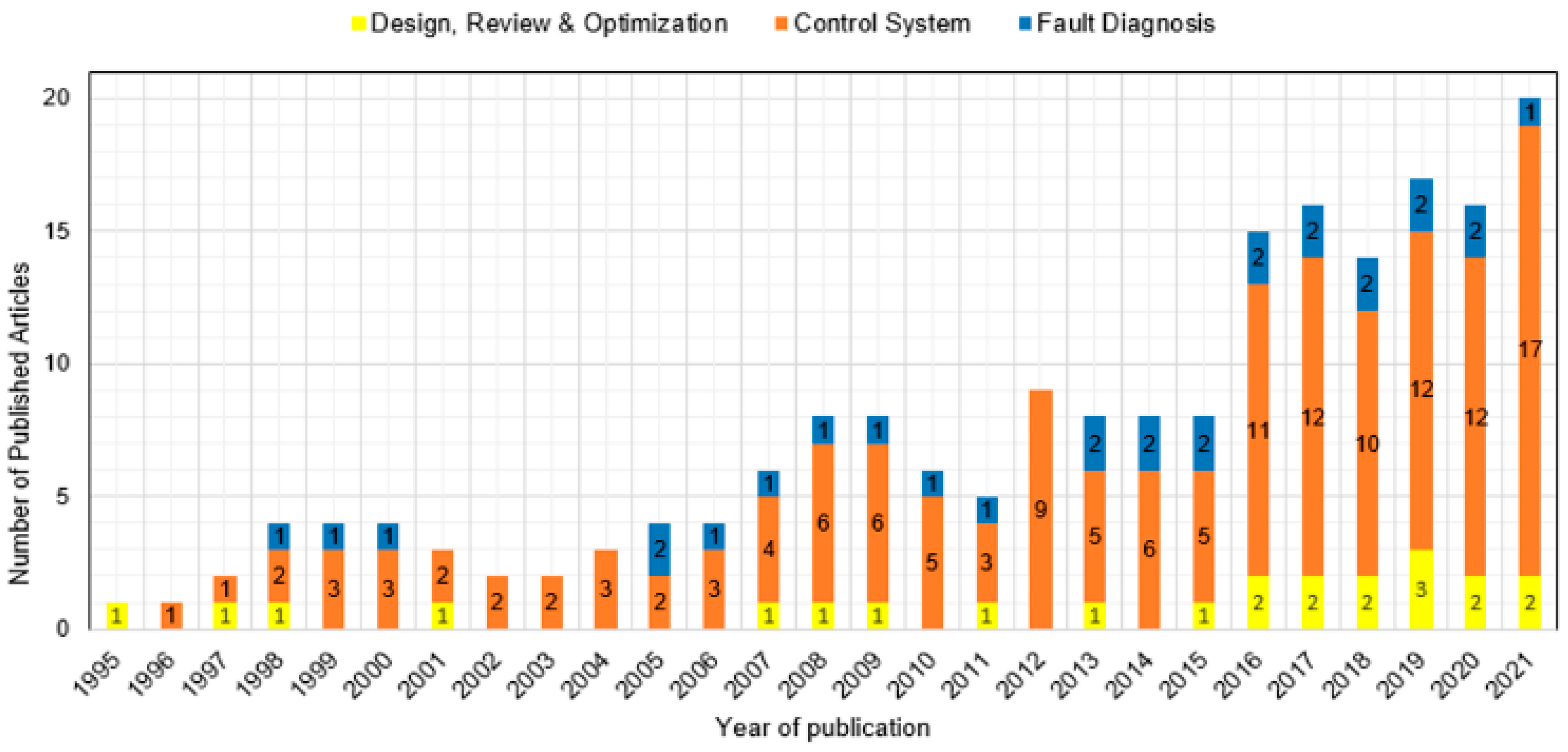

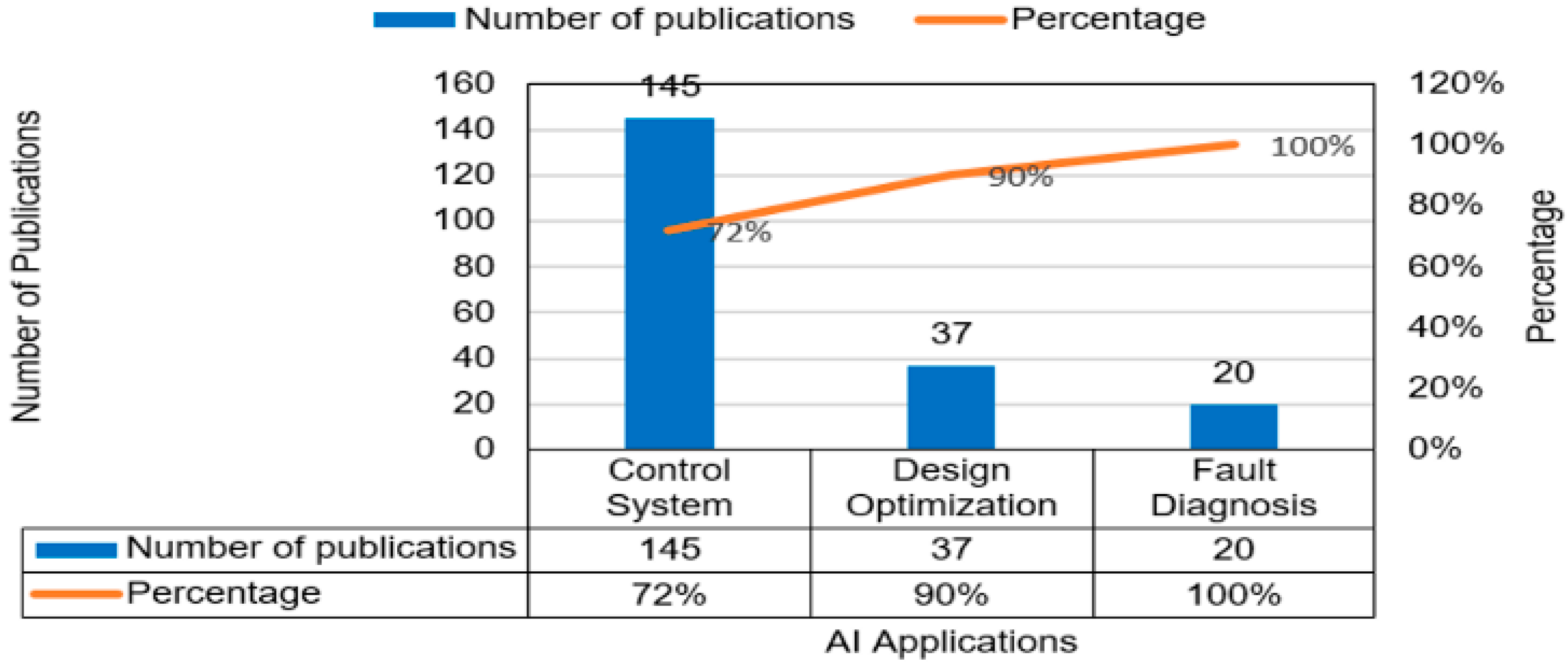

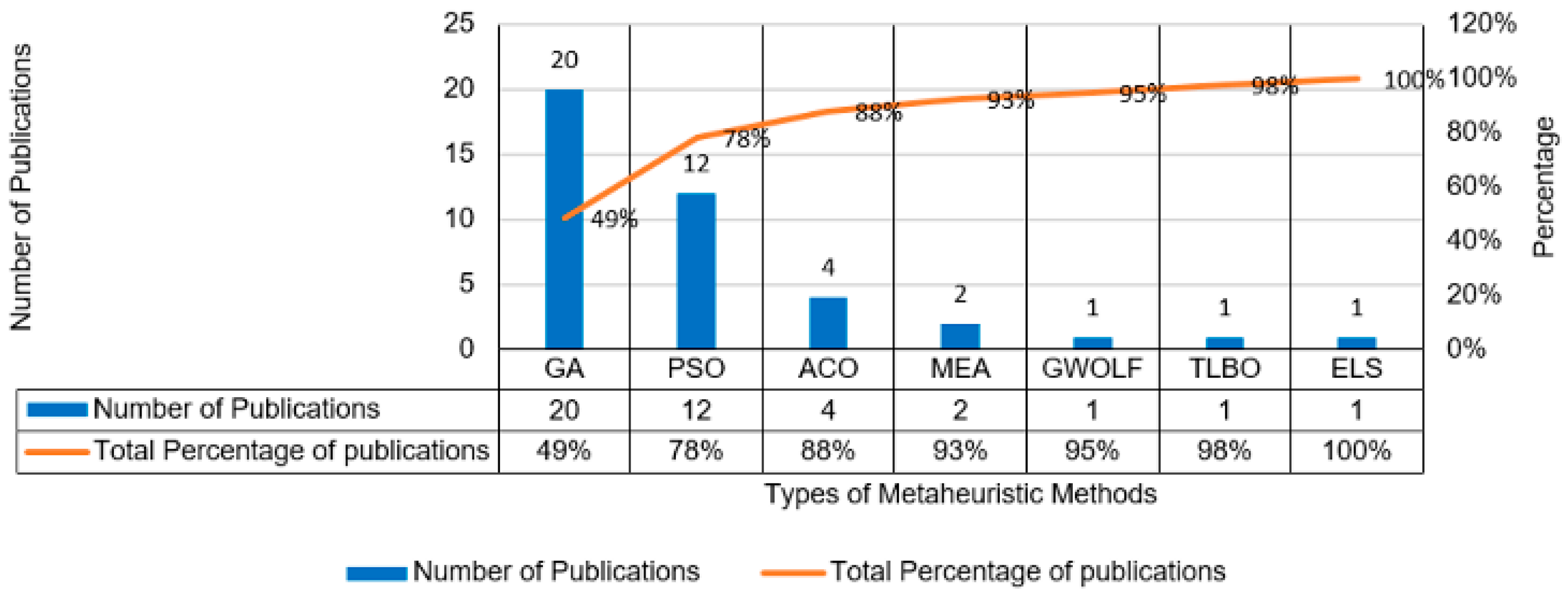
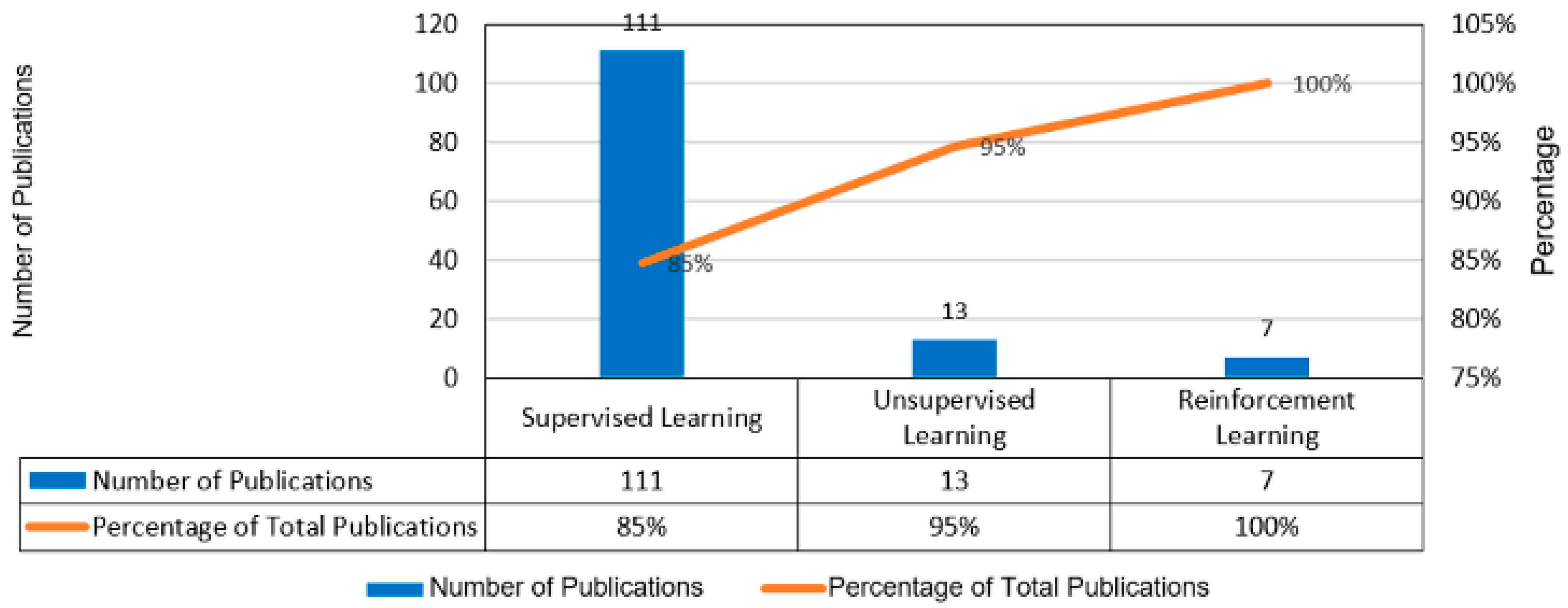



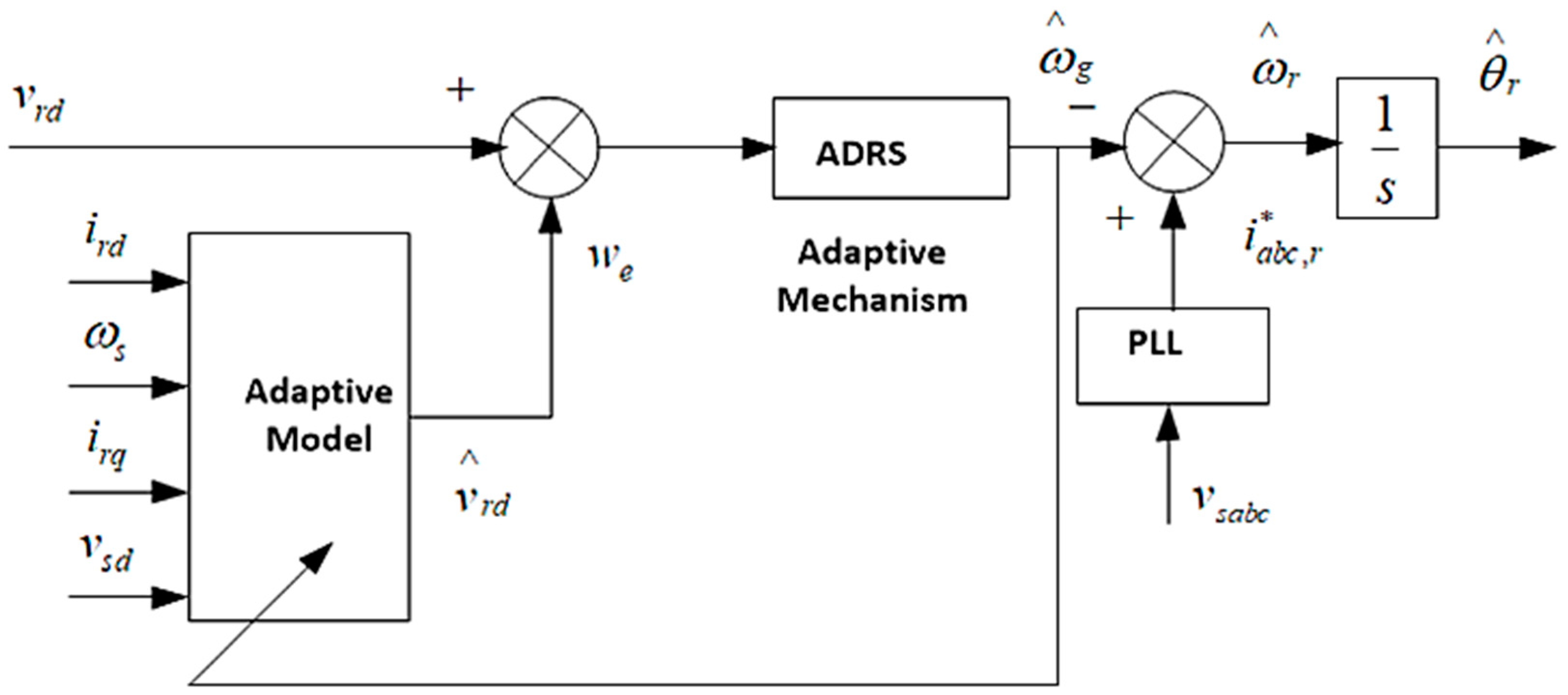
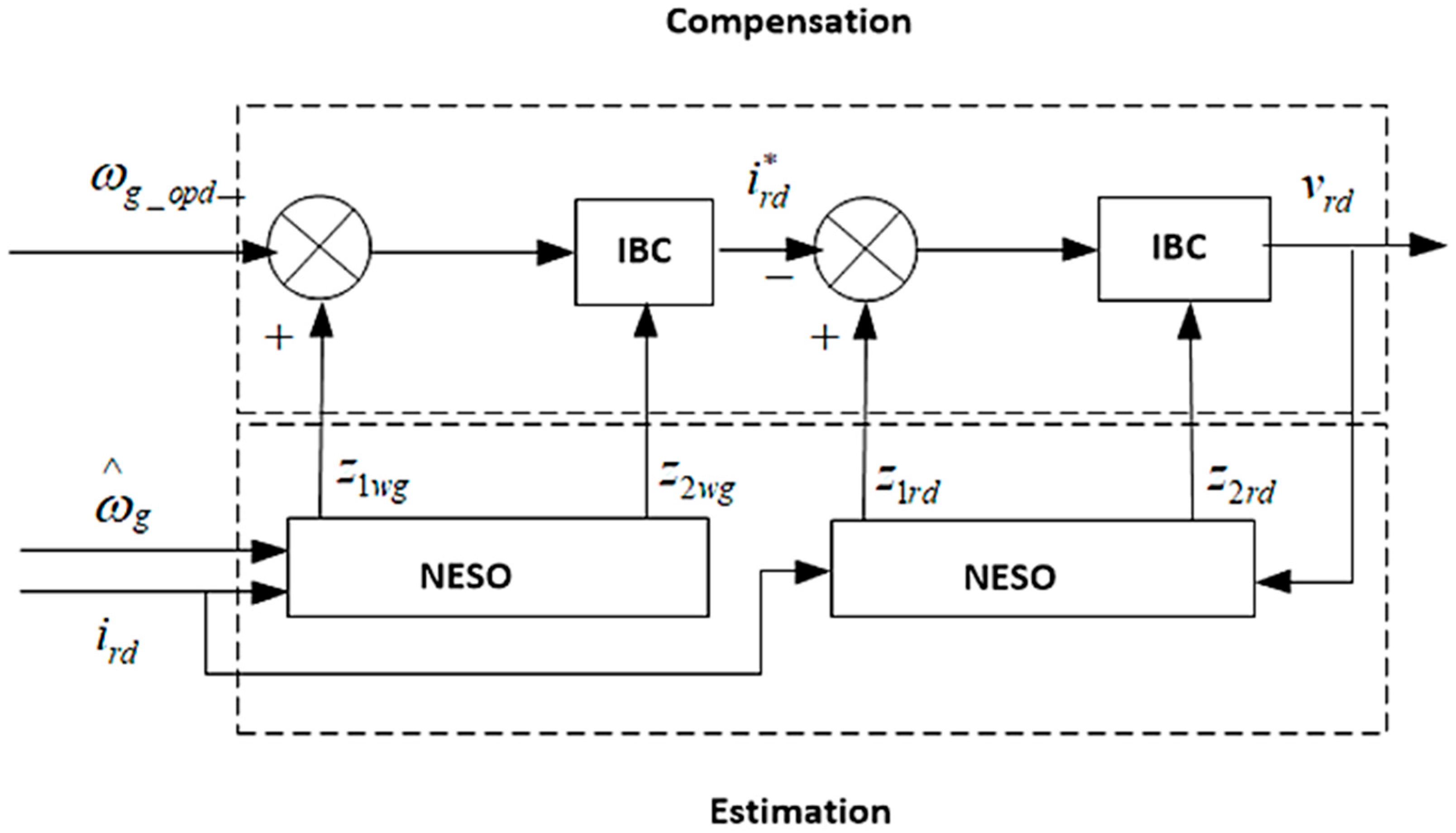
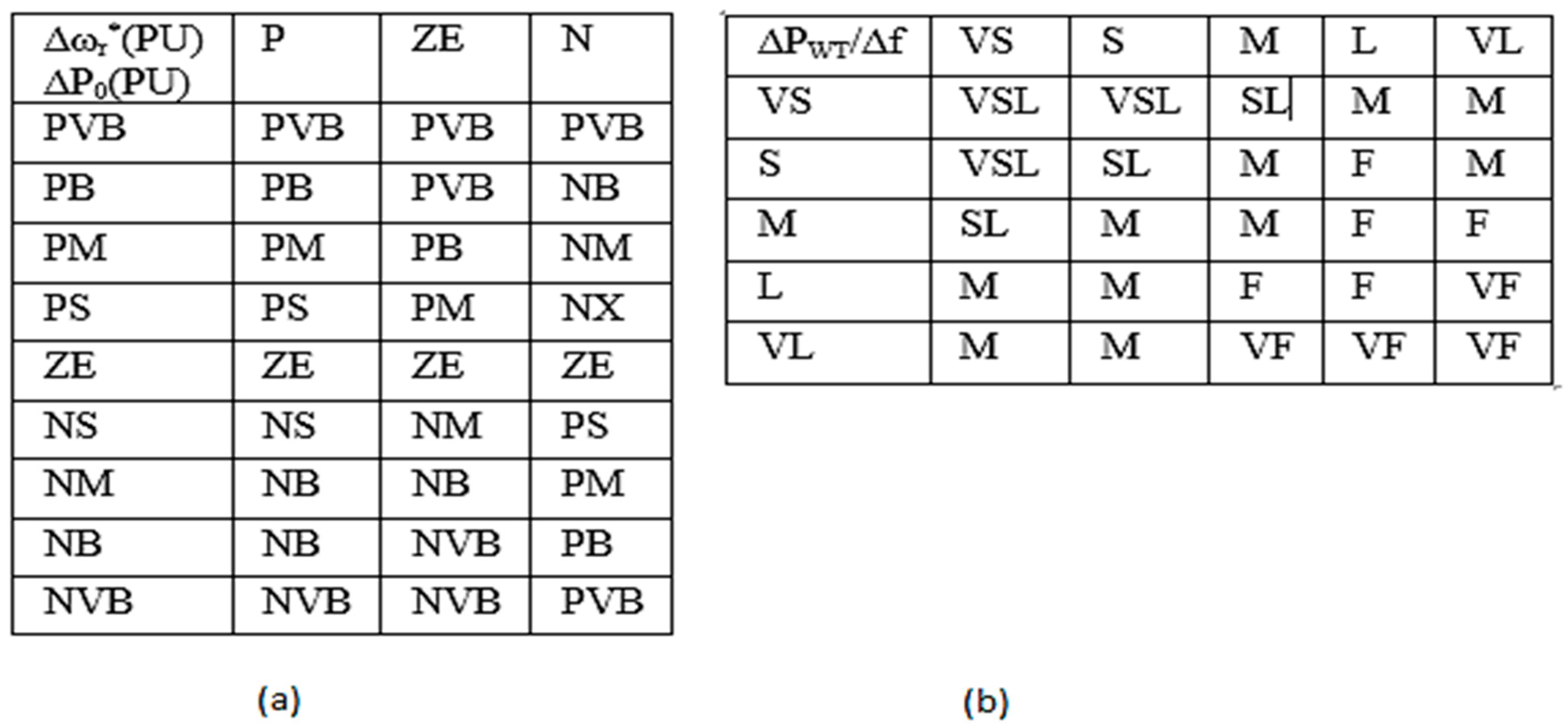
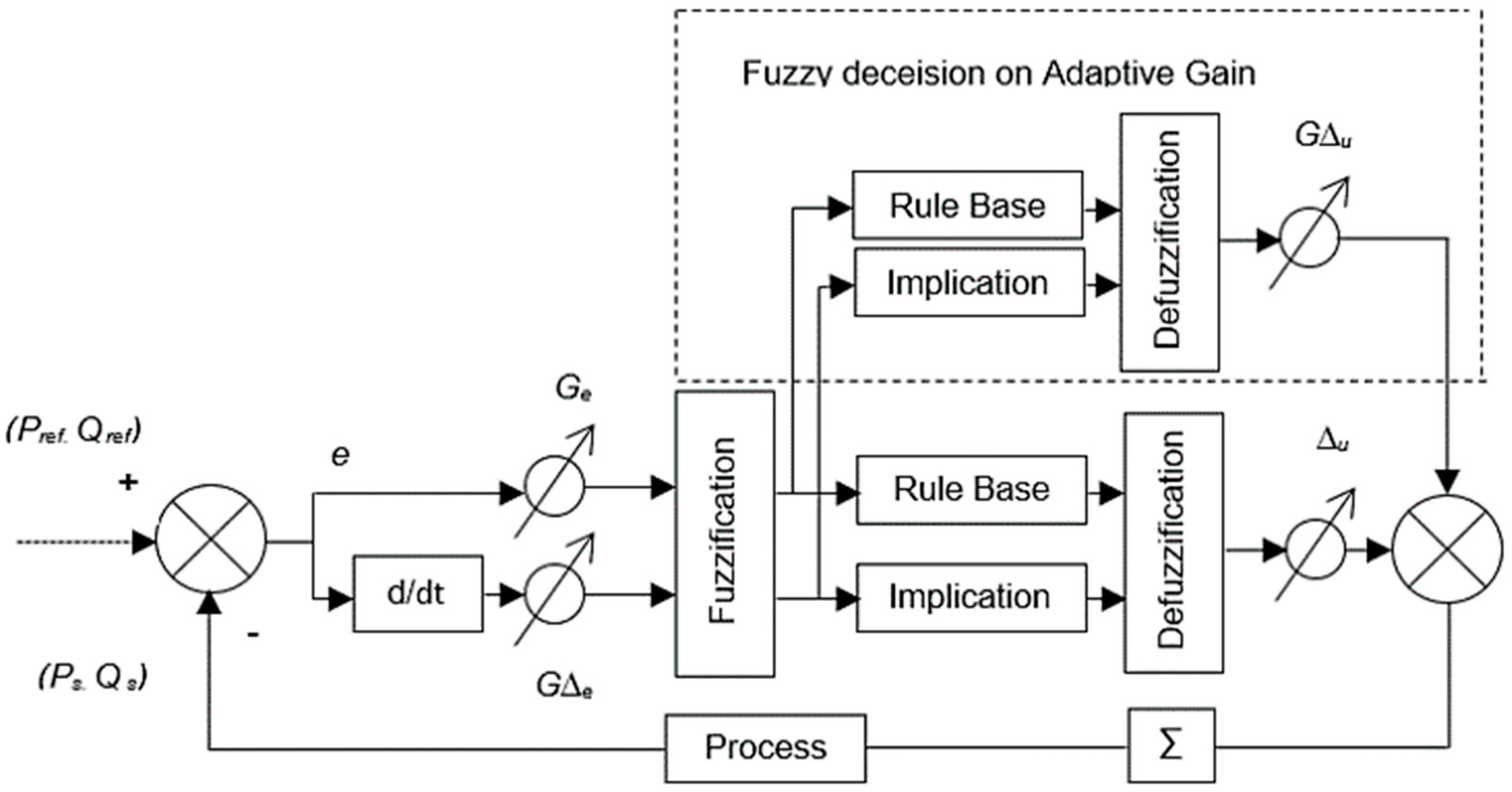

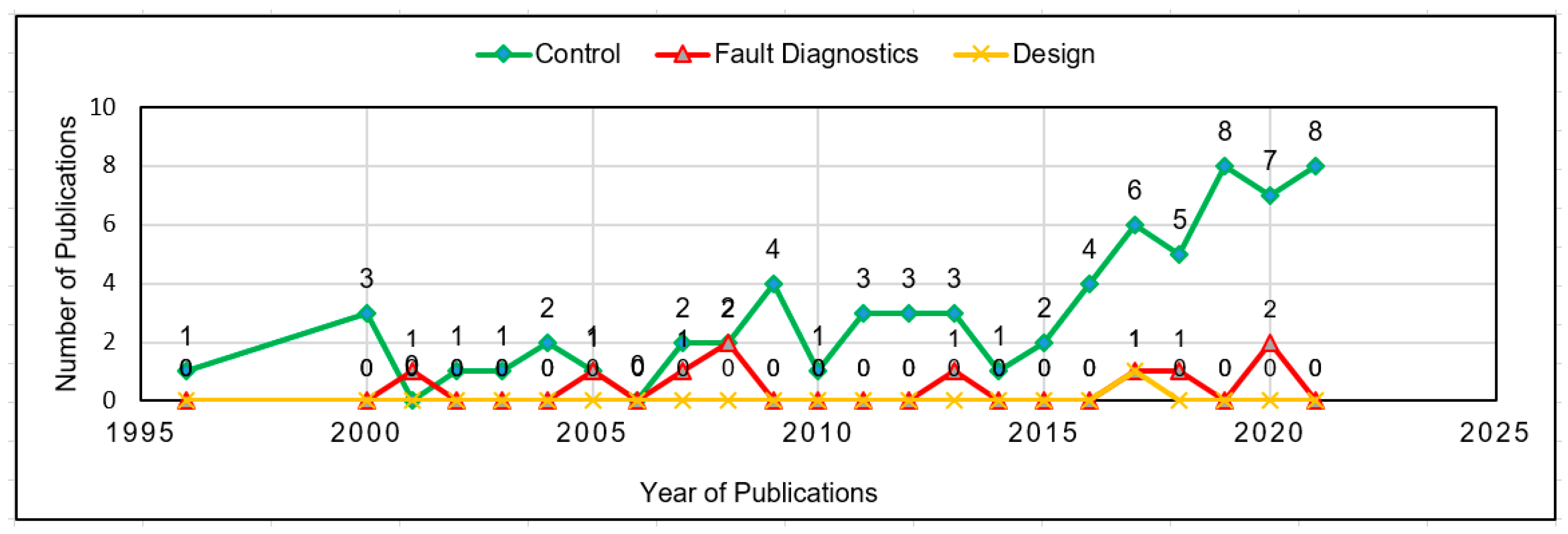
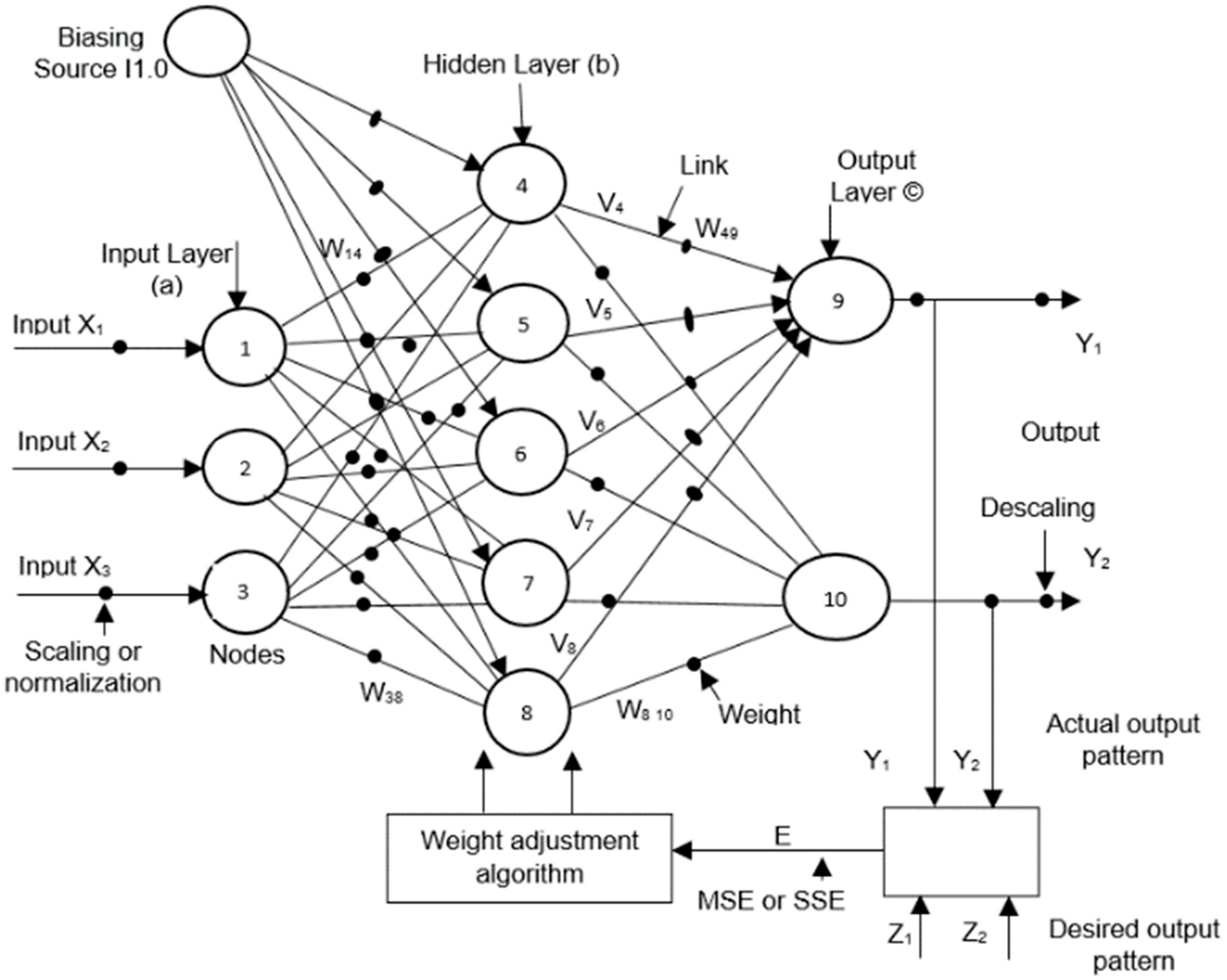

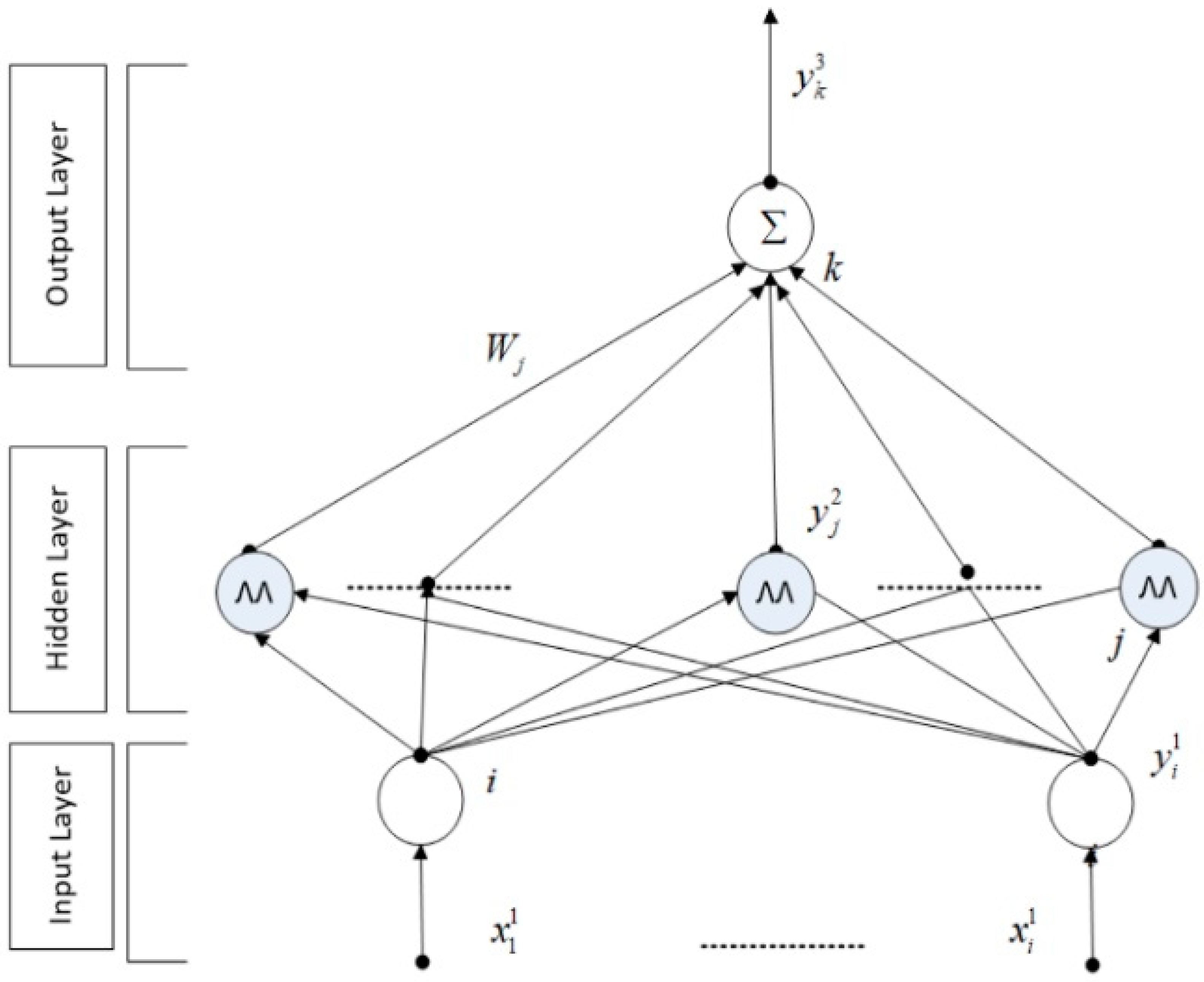

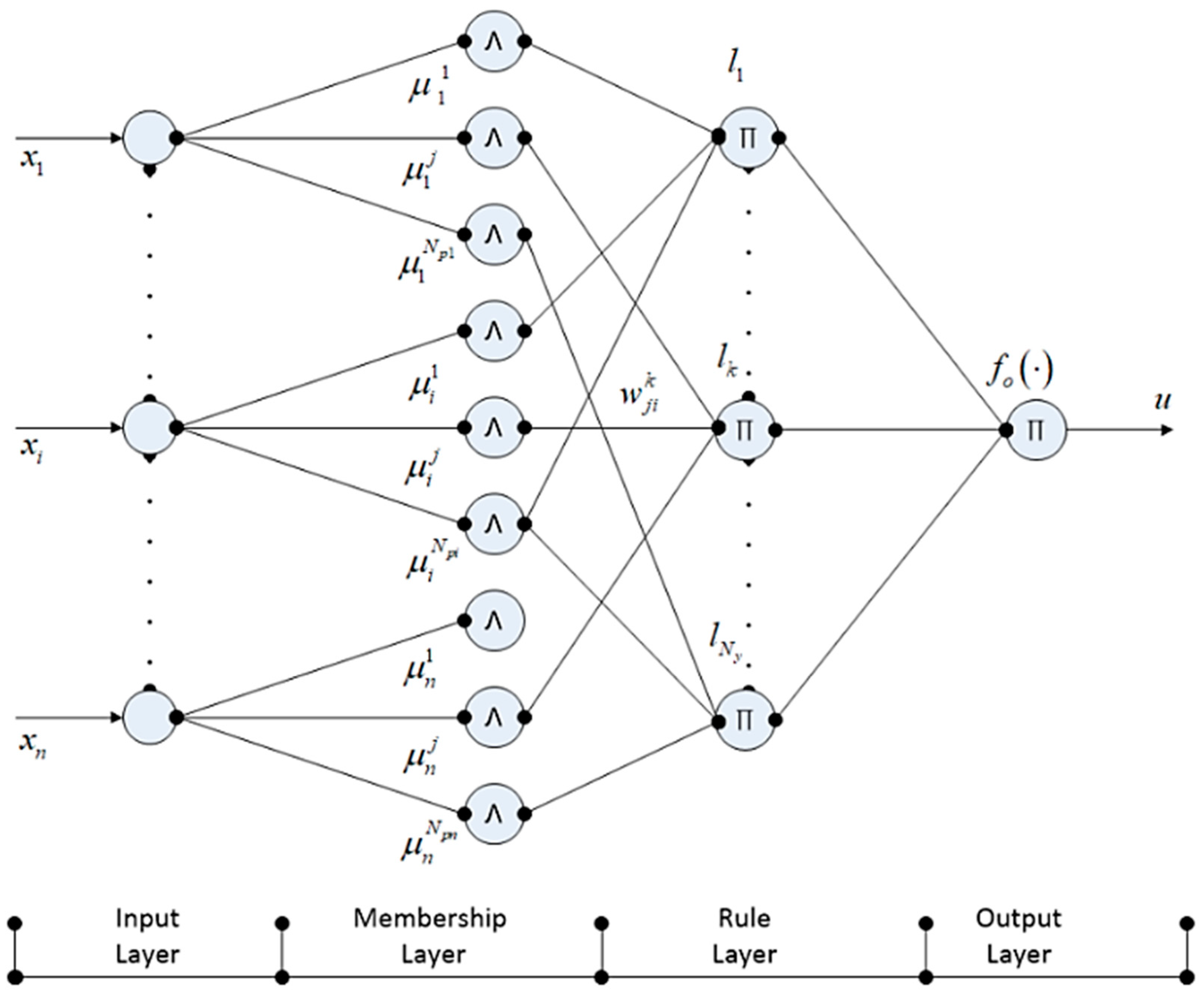
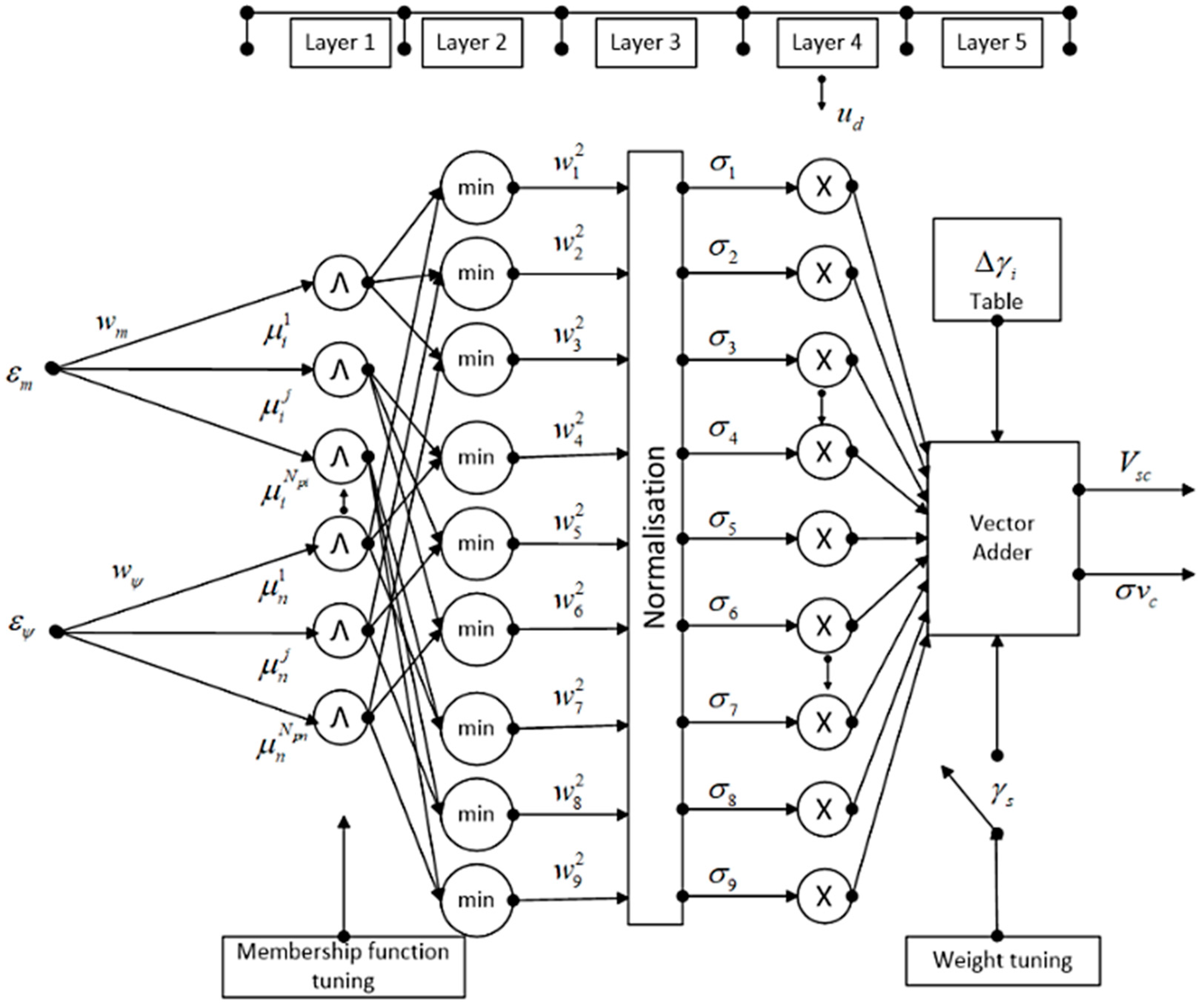
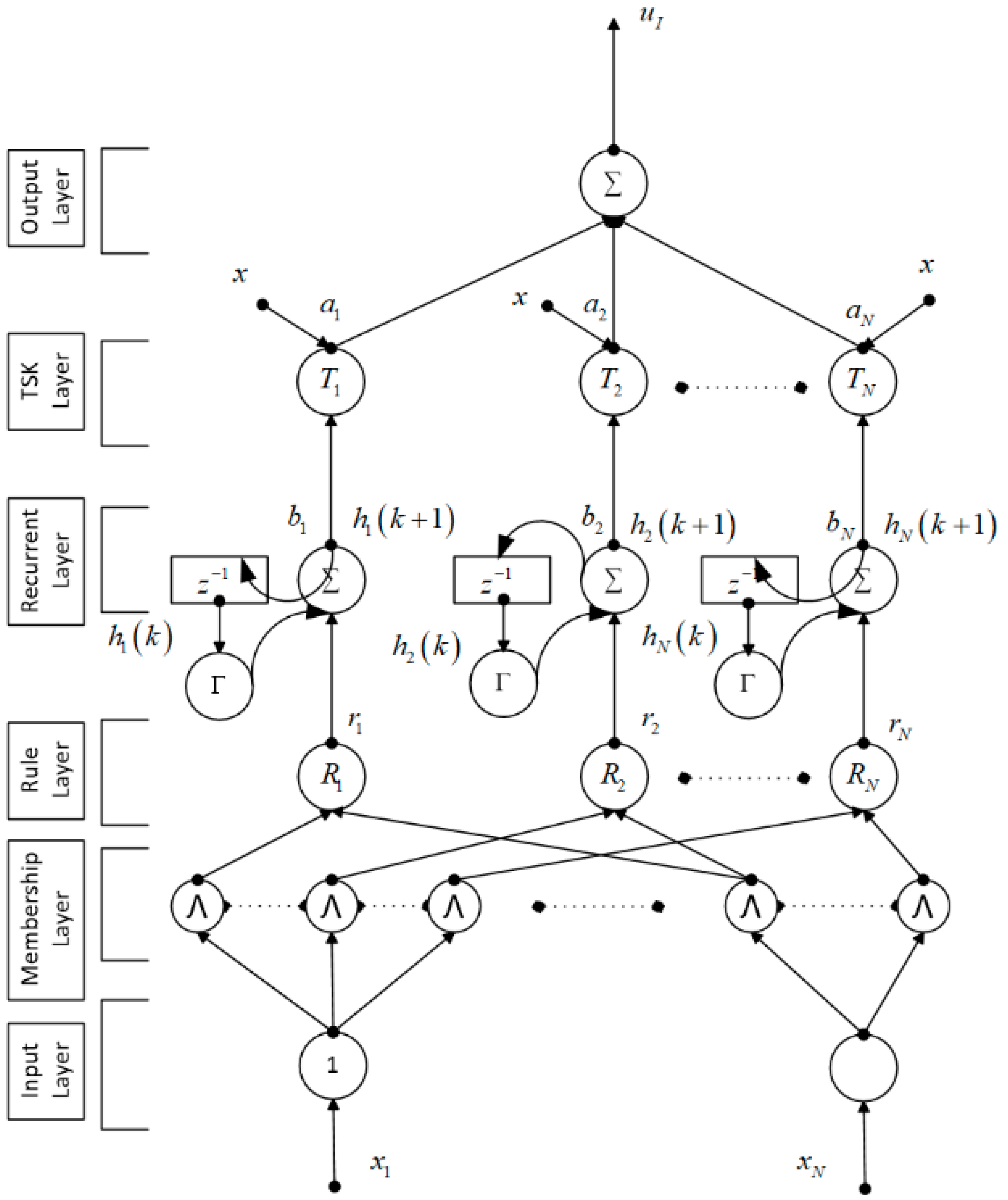
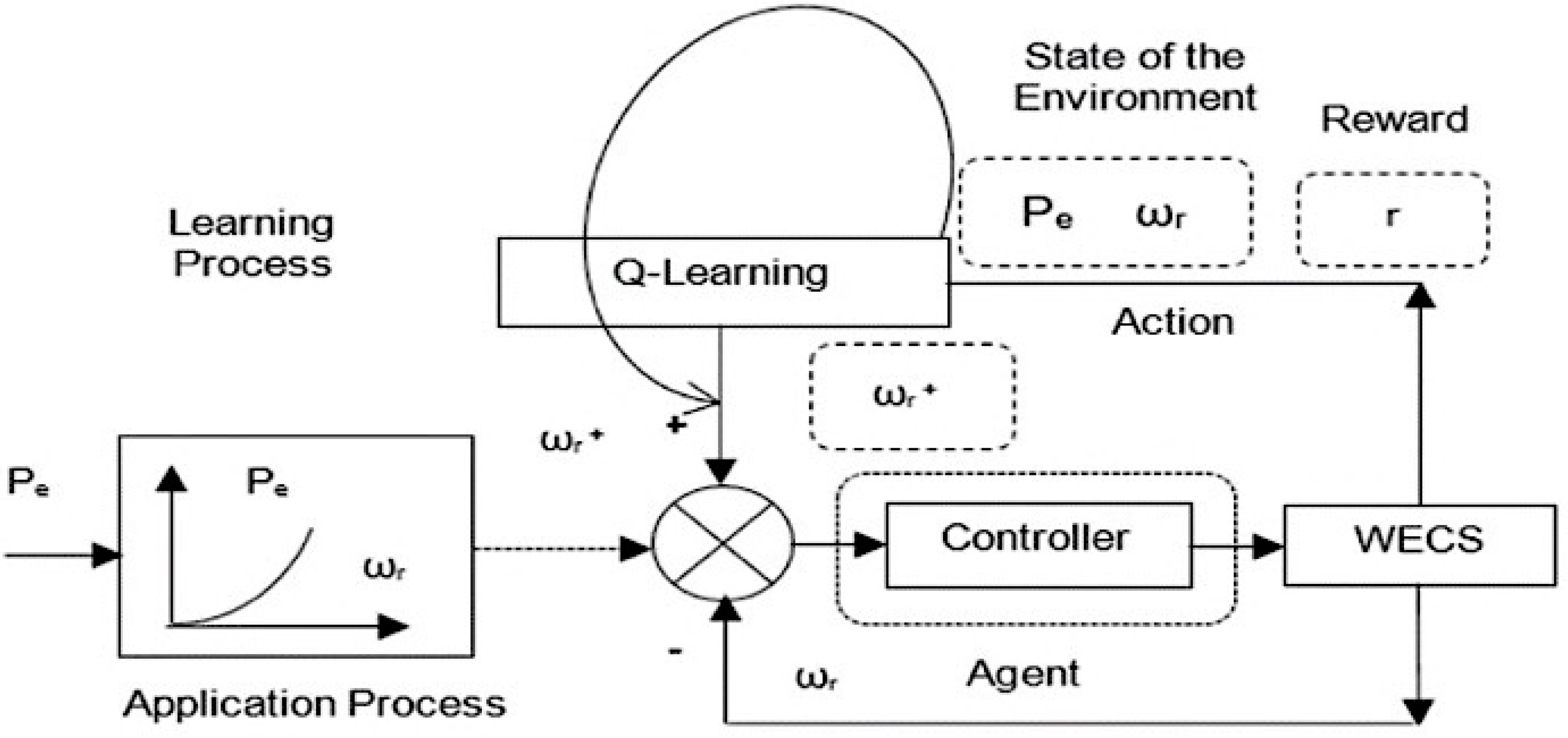
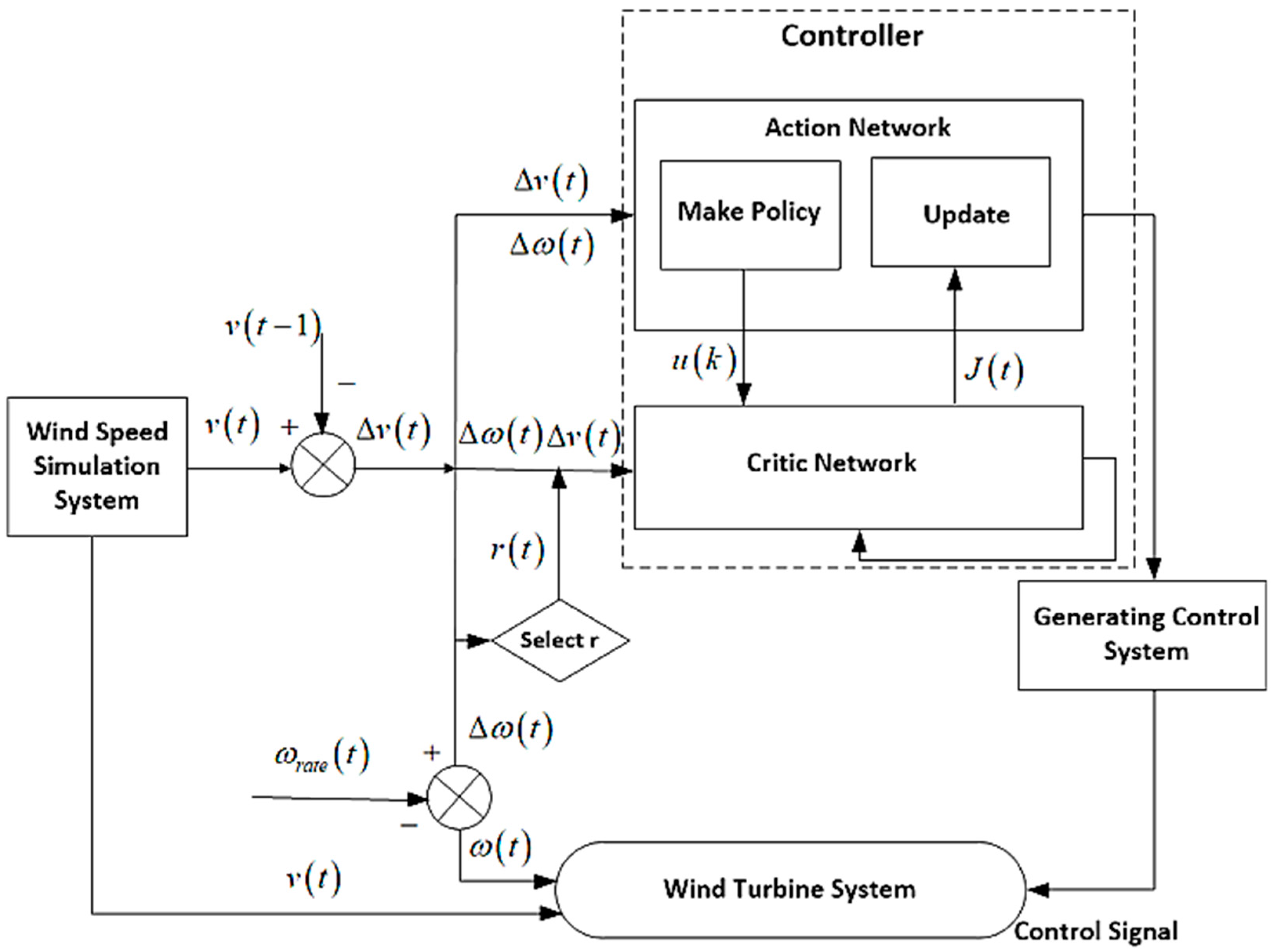
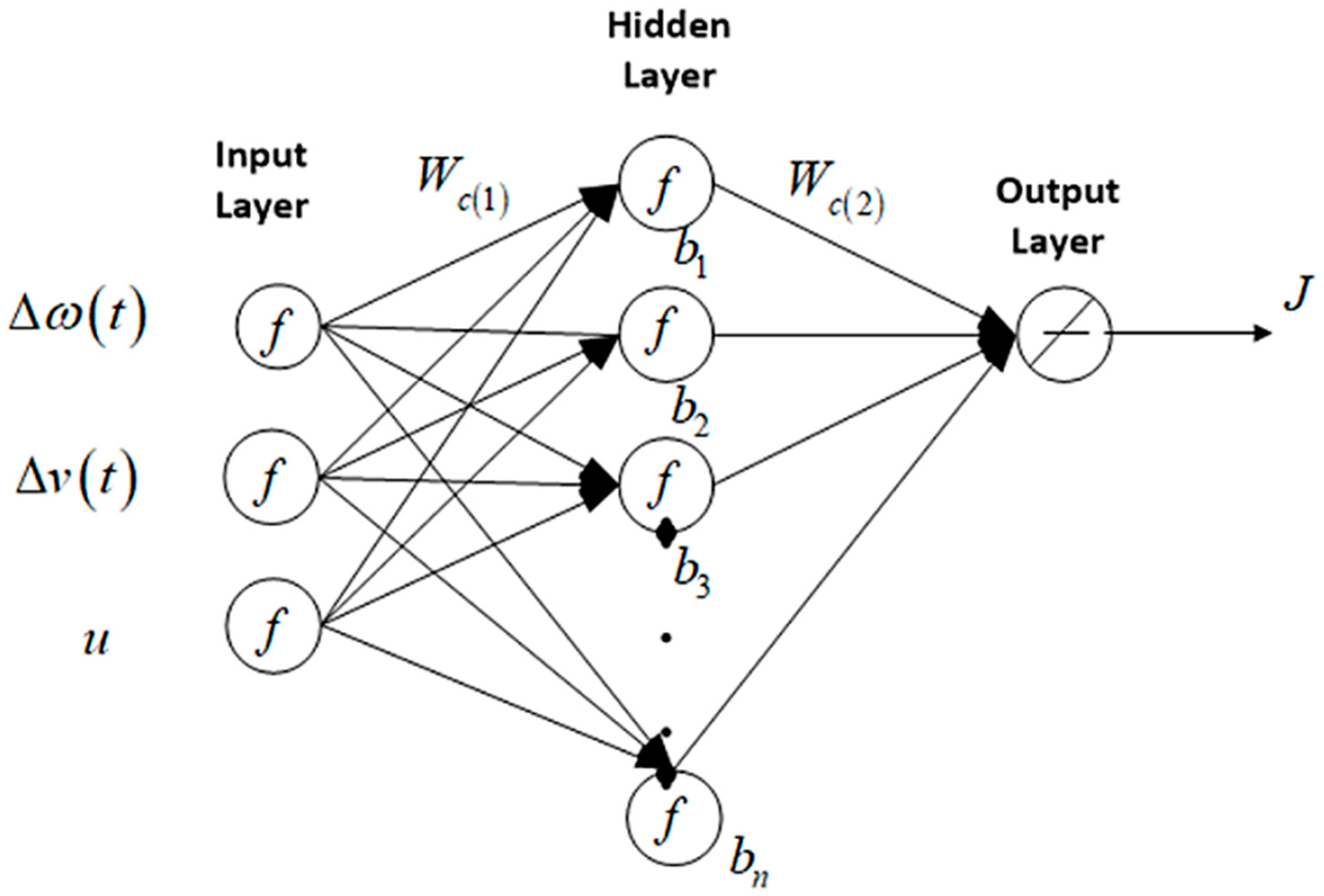
| Methods | Type | Conventional Algorithms | Applications | Advantages and Drawbacks | |||
|---|---|---|---|---|---|---|---|
| Control Systems | Parallel Ability | Global Union | Implementation Ease | Merge Speed | |||
| Metaheuristic | Population-based methods | Particle Swarm Optimization (PSO) | [18,19,25,42,43,54,164,165,167,177,178,179,180,181,182,183] | Yes | BEST | GOOD | GOOD |
| Crow Search Algorithm (CSA) | [49] | BETTER | BETTER | BETTER | |||
| Ant Colony Optimization (ACO) | [158,166] | BETTER | BETTER | BETTER | |||
| Differential Evolutionary (DE) | [19,140,156,167,171,174,184,185,186] | BETTER | BETTER | BETTER | |||
| Immune Algorithm (IA) | [44,45,166,184,185] | BETTER | BETTER | BETTER | |||
| Genetic Algorithm (GA) | [39,40,41,47,51,52,53,165,166,177,180,181,187,188,189,190,191,192,193] | BEST | GOOD | GOOD | |||
| Solutions with AI applications: 1. Accomplishes pre-training with an appealing smaller learning rate to accomplish faster merging | |||||||
| Trajectory-based methods | Tabu Search Method (TSM) | Control System [45,164,165,169,184,194] | No | GOOD | BEST | BEST | |
| Simulated Annealing Method (SAM) | [164] | BETTER | BEST | BEST | |||
| Solutions with AI applications: 1. Works on undefined jump location 2. Less inclined to impulsive merging 3. least possible to become caught in localized targets | |||||||
| Methods | Type | Conventional Algorithms | Applications | Advantages | Drawbacks |
|---|---|---|---|---|---|
| MACHINE/DEEP Learning Neural Network (NN) methods | Clustering | k-means | Control system, [140,204,205,206,207] | Not applicable | |
| Density-based spatial clustering of applications with noise (DBSCAN), Radial basis function network (RBFN) | Control systems [141,142,143,176,186,208,209,210,211,212,213,214,215], | Equated to Feed Forward NN | |||
| 1. Easy network structure 2. Higher training speed | 1. Longer training time 2. Less sensitive 3. Low capability of handling uncertainty | ||||
| Association | Fuzzy neural network (FNN) and (WPFNN) | Control systems, [31,143,147,148,154,177,180,190,191,196,216,217,218,219,220,221,222,223] | Equated to Conventional NN | ||
| 1. Competence in managing ambiguity 2. Association of professional knowledge 3. Greater training speed | 1. Manual fuzzy rule generation | ||||
| Adaptive Fuzzy neural interface system (ANFIS) | Control systems [155,196,219,224,225,226,227,228] | Equated to Conventional FNN | |||
| 1. Auto Fuzzy logic rule generation | |||||
| NN with recurrent unit | Recurrent neural network (RNN) or Elman NN (ENN), Self-evaluation (ANN) | Control systems [45,148,179,226,229,230,231] | Equated to Conventional NN | ||
| 1. Improved transient ability 2. Enhanced responsiveness | 1. Lower long-term dependence dealing 2. Slower training speediness | ||||
| Non-linear autoregressive network with exogenous inputs (NARX) | Control systems [218,232], | Equated to RNN or ENN | |||
| 1. Improved training speed 2. Improved simplification 3. Enhanced long-term dependence dealing | 1. Less sensitive | ||||
| NN with convolutional structure | Time-delayed neural network (TDNN) or1D convolutional NN (CNN), FSMPC | Control system [45,157,197] | Equated to Conventional RNN | ||
| 1. Weaker time series modeling | |||||
| 1. Improved accountability | 1. Composite computation 2. Theoretical output with random parameters | ||||
| Kernel-based approach | Sparse Kernel method | Support Vector Machine (SVM) | Control systems [147,148,233,234,235,236,237] | Equated to Convectional Kernel Method | |
| 1. Better approximation 2. Better computation efficiency | 1. Probabilistic output 2. Longer training period | ||||
| Solutions with AI applications: 1. Probabilistic results are overcome with certainty, using data to evaluate the frequency of past success and unsuccessful actions 2. Solve training arrays locally | |||||
| Methods | Type | Conventional Algorithms | Applications | Advantages | Drawbacks |
|---|---|---|---|---|---|
| Unsupervised Learning Neural Network (NN) methods | Clustering | k- means | Control system [162] | 1. Simple implementation 2. Better interpretability | 1. Complex to deviations |
| Density-based spatial clustering of applications with noise (DBSCAN) | Control system [181,239] | ||||
| Self-organizing maps (SOMs) | Control system [181,239] | 1. Improved interpretability 2. Less complex to original variable collection 3. Less complex to deviations | |||
| Solutions with AI applications: 1. Substitute deviations with an appropriate value employing Quantile Methods | |||||
| Data minimization approach | Principal component analysis (PCA) | Control system [150] | 1. Flexible frameworks with various improvements | 1. Only be used with grouping and intellectual methods | |
| Solutions with AI applications: 1. Substitute data minimization methods with filtering and standardization methods | |||||
| Dynamic Performance Measures | Fuzzy Logic | Machine/Deep Learning | Reinforcement Learning | |||
|---|---|---|---|---|---|---|
| FFNN | FNN | RNN | RFNN | |||
| Dataset requirement | Superior | Finest | Superior | Good | Good | Not applicable |
| Approximation ability | Good | Superior | Finest | Finest | Finest | Finest |
| Strength | Better | Good | Superior | Superior | Finest | Finest |
| Calculation burden | Finest | Finest | Superior | Good | Good | Not applicable |
| Expert knowledge rooted in the ability | Yes | No | Yes | No | Yes | No |
| System Dynamics | Not applicable | Not applicable | Not applicable | Applicable | Applicable | Applicable |
| Conditions of AI in Power Electronics’ Control System | Data Set Condition | Accuracy | Sensitivity | Speed | Interpretability | Computing Effect |
|---|---|---|---|---|---|---|
| Low | High accuracy | High | High | High | Moderate |
Publisher’s Note: MDPI stays neutral with regard to jurisdictional claims in published maps and institutional affiliations. |
© 2022 by the authors. Licensee MDPI, Basel, Switzerland. This article is an open access article distributed under the terms and conditions of the Creative Commons Attribution (CC BY) license (https://creativecommons.org/licenses/by/4.0/).
Share and Cite
Behara, R.K.; Saha, A.K. Artificial Intelligence Control System Applied in Smart Grid Integrated Doubly Fed Induction Generator-Based Wind Turbine: A Review. Energies 2022, 15, 6488. https://doi.org/10.3390/en15176488
Behara RK, Saha AK. Artificial Intelligence Control System Applied in Smart Grid Integrated Doubly Fed Induction Generator-Based Wind Turbine: A Review. Energies. 2022; 15(17):6488. https://doi.org/10.3390/en15176488
Chicago/Turabian StyleBehara, Ramesh Kumar, and Akshay Kumar Saha. 2022. "Artificial Intelligence Control System Applied in Smart Grid Integrated Doubly Fed Induction Generator-Based Wind Turbine: A Review" Energies 15, no. 17: 6488. https://doi.org/10.3390/en15176488





